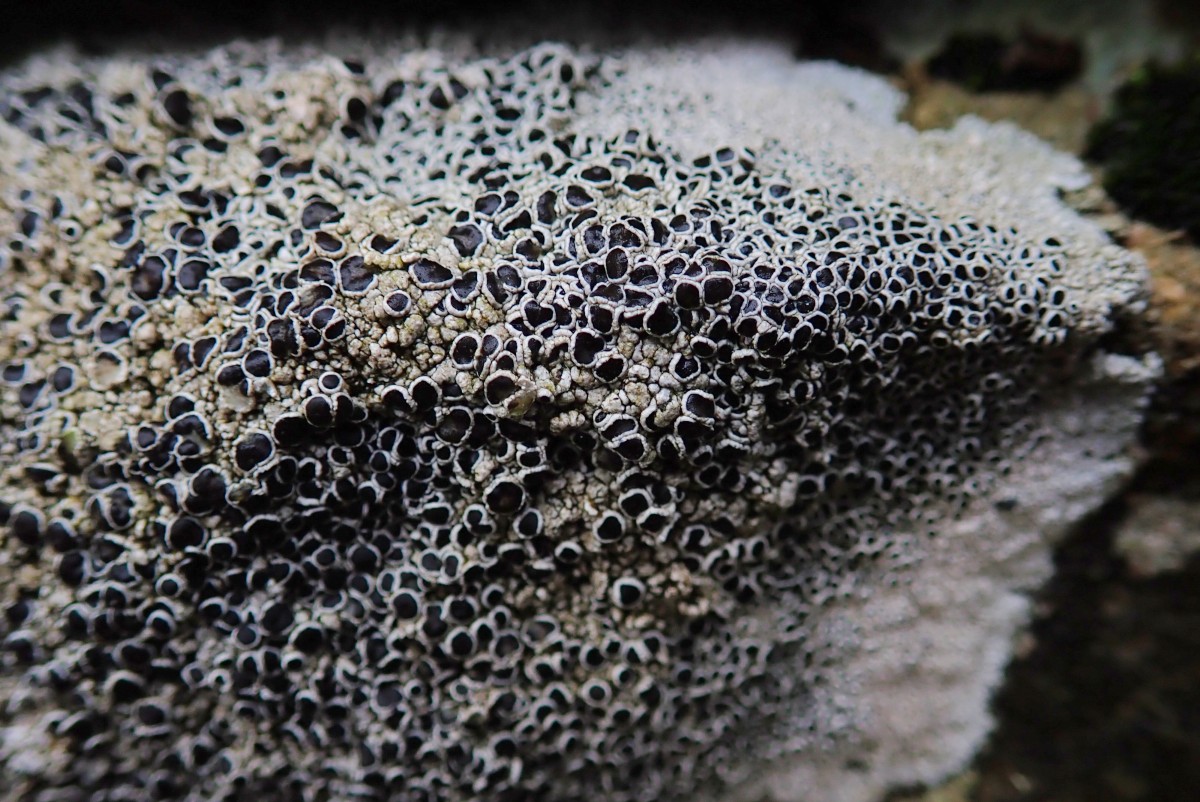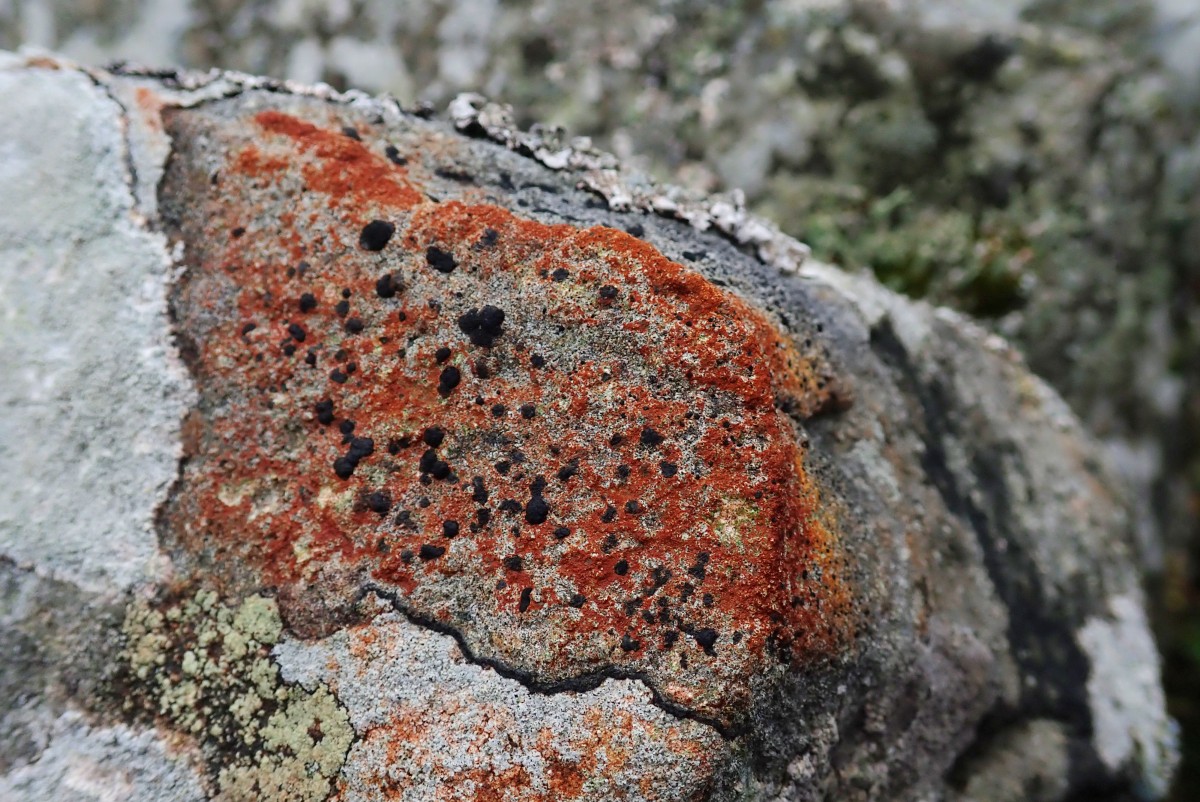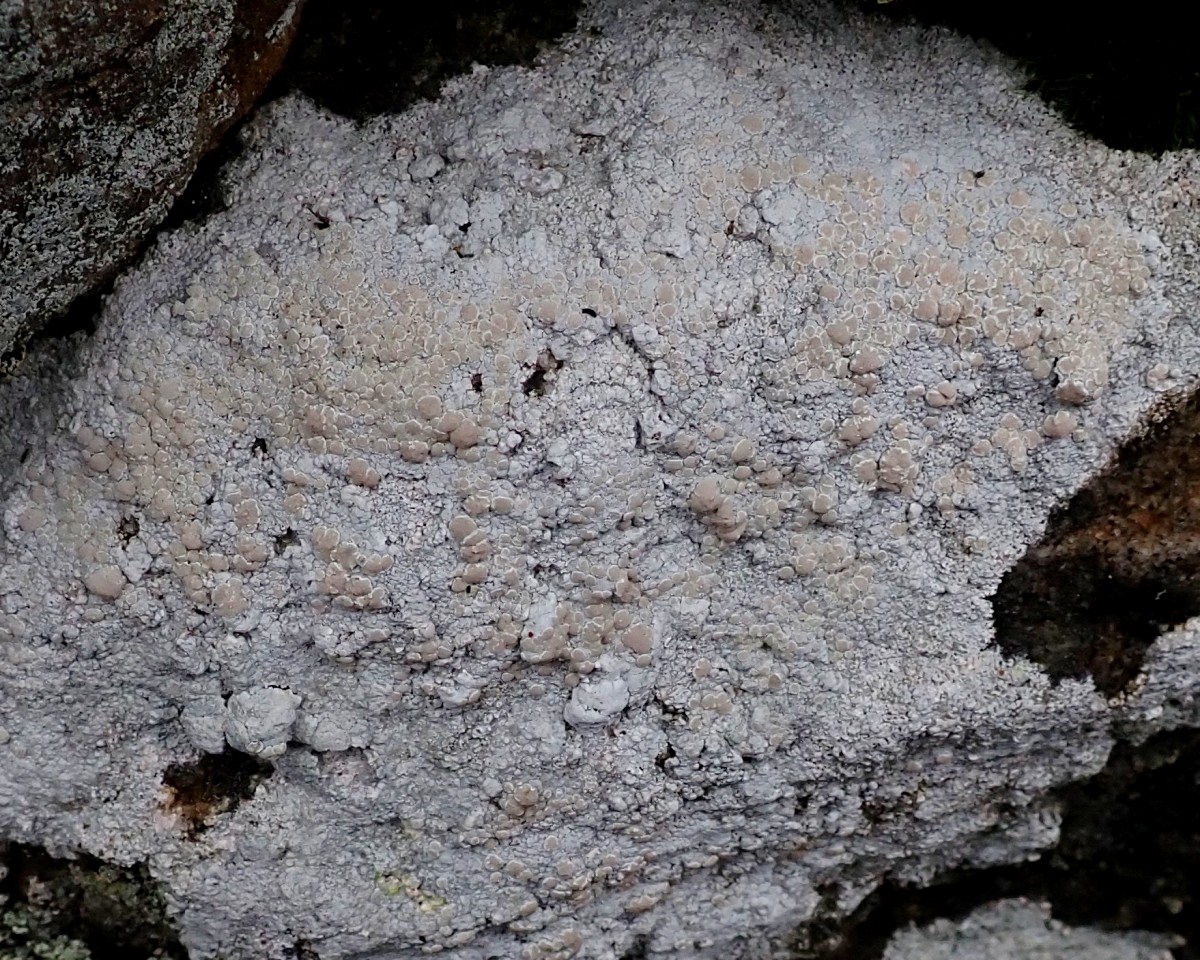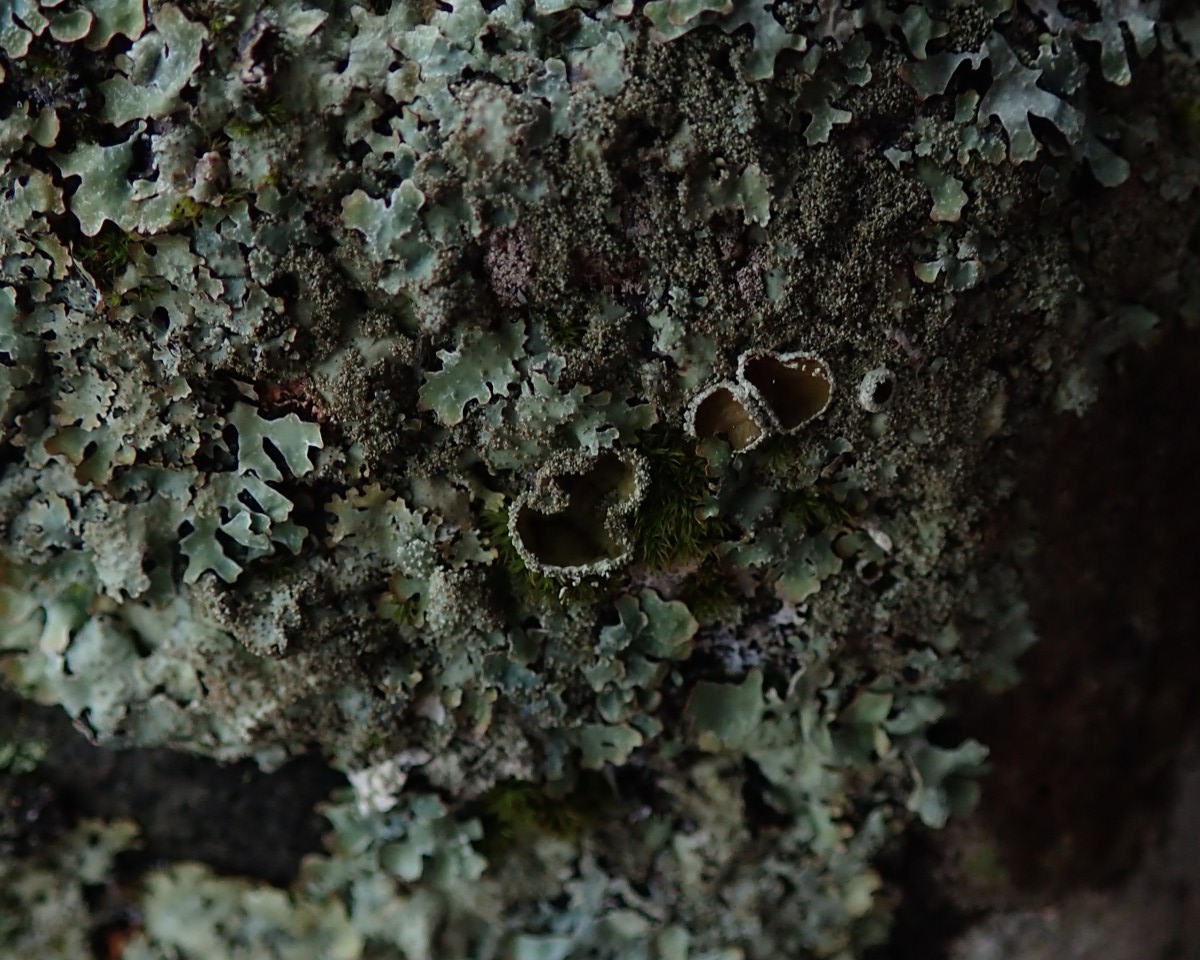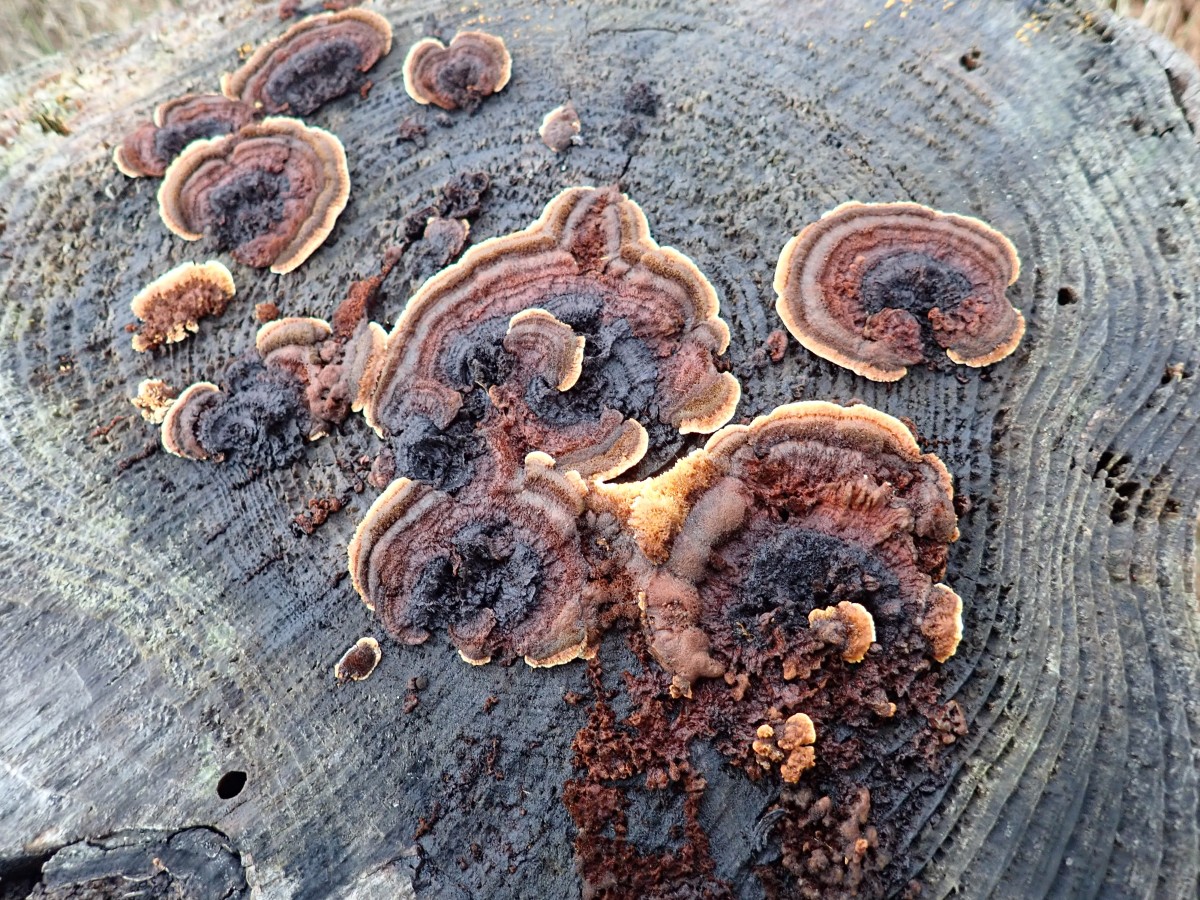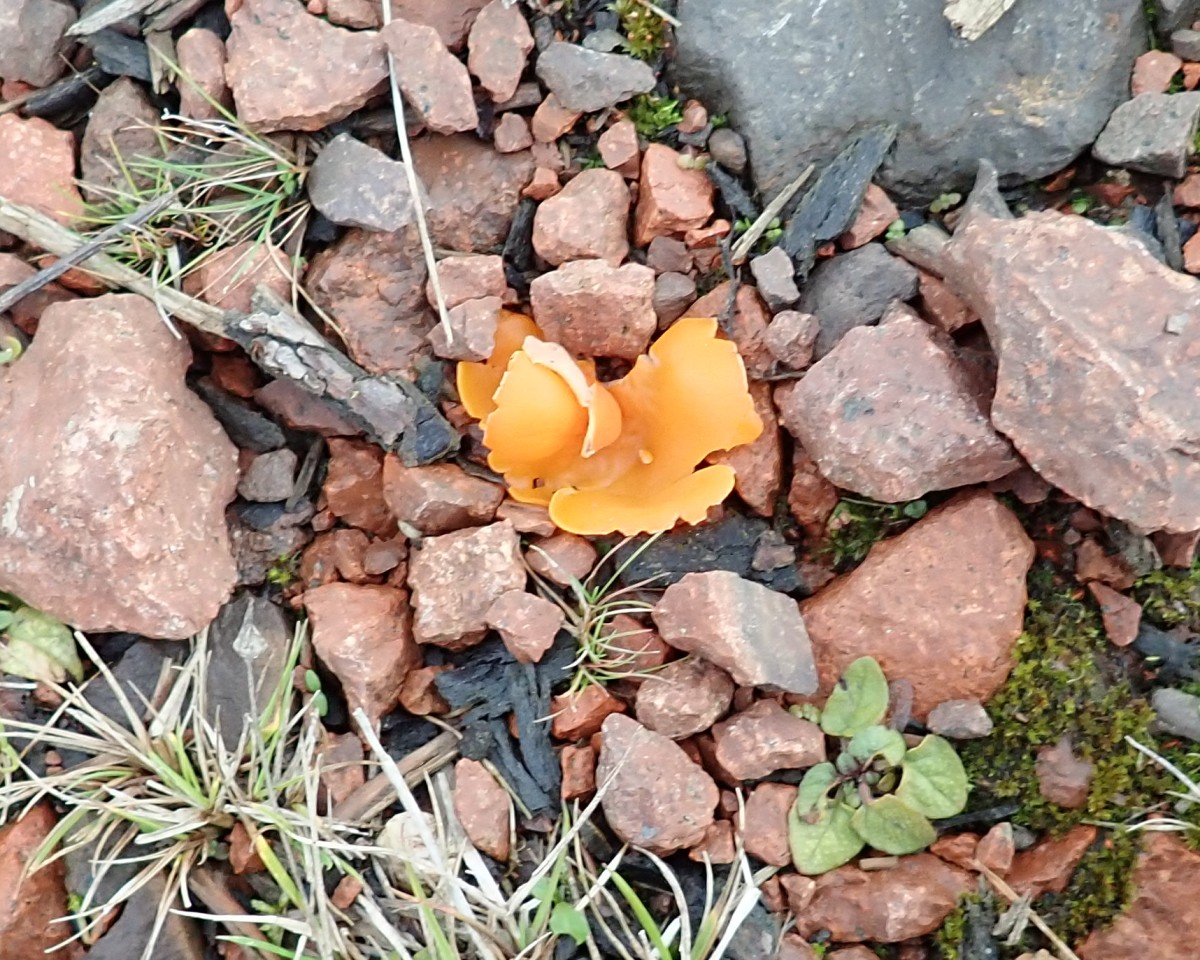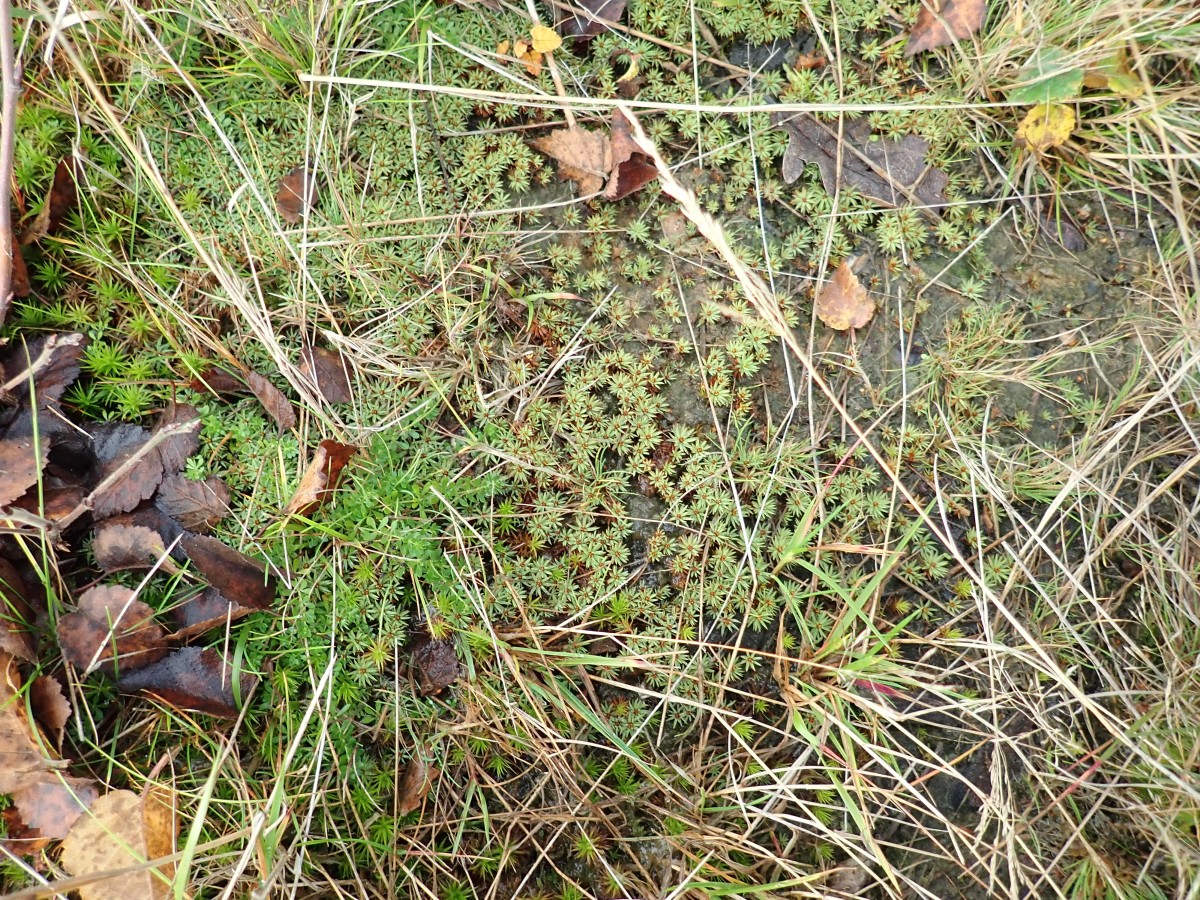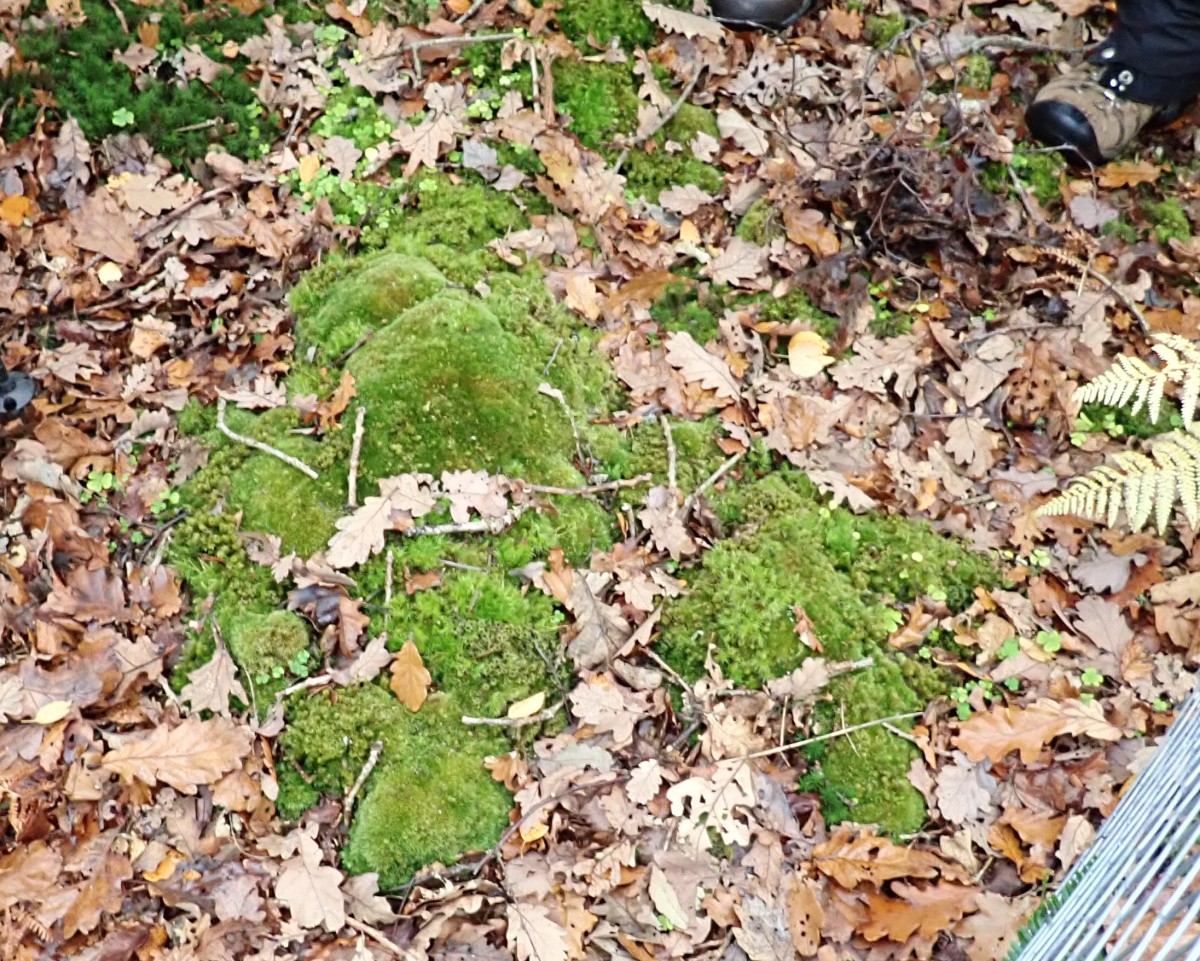Dipton Burn Woods run on either side of a steep, once glaciated, gorge. Thick carboniferous sandstone cliffs were visible at White Crag and the picture below of ‘Devil’s Elbow’ reveals the terrain and a thick shale layer in the sequence.
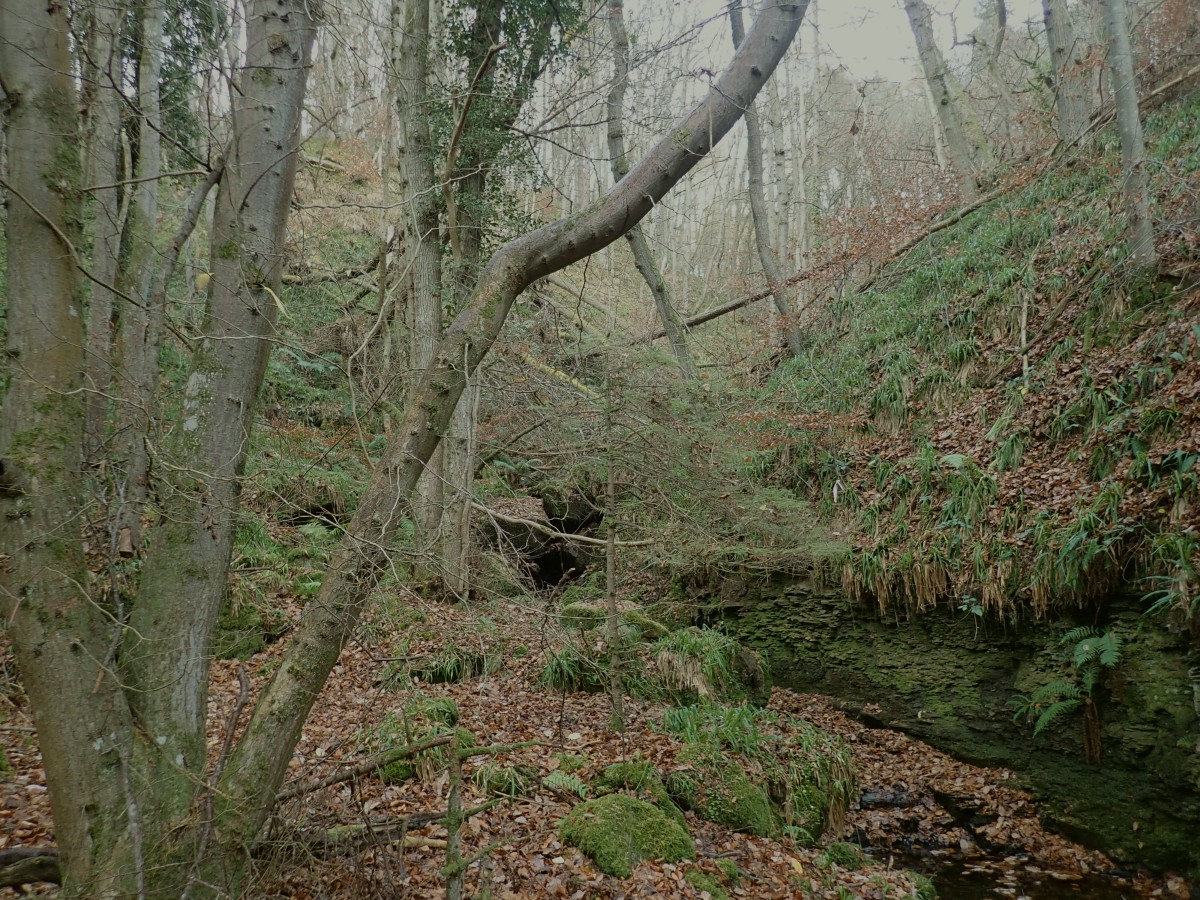
The woodland is of different ages, ranging from, fairly recent but mature birch stands to ancient plantation woodland. Ancient and ancient semi-natural woodland formed the greater part of the vegetation types.
Our aim was to look at soil cores investigating any differences that might be indicative of types of woodland these areas.
Fly Agaric (Amanita muscaria) was identifiable in the plantation of downy birch (Betula pubescens) we encountered near the entrance. It is an ectomycorrhizal partner of birch and pine. Unsurprisingly, it has been used as an insecticide hence the common name.
The soil core from this plantation consisted of a largely unconsolidated leafy layer mostly Sessile Oak (Quercus petraea) over a brown earth, grading into a lighter coloured sandier horizon at about half a meter depth.
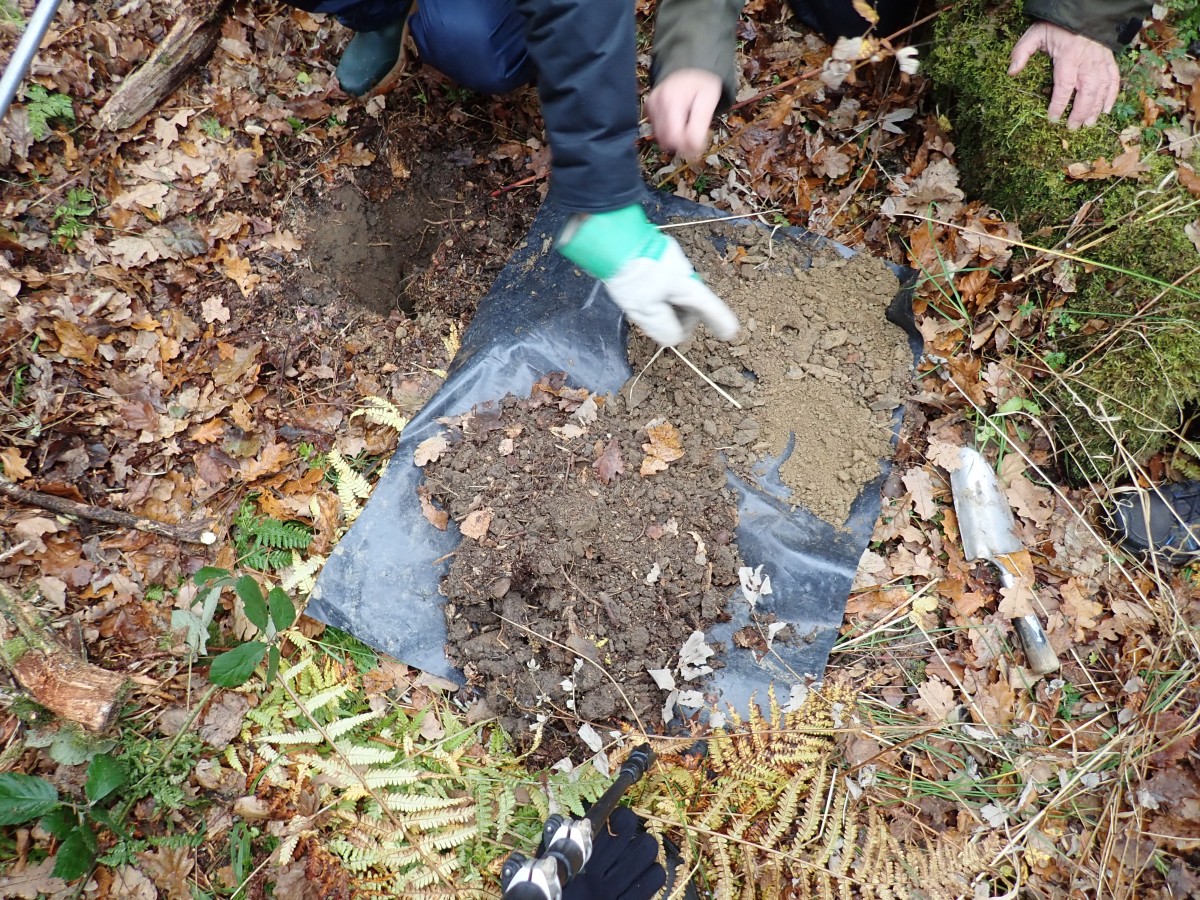
Oak predominated in the ancient woodland although still probably planted since the sizes were uniform. The Sessile Oak has straighter branches then the English Oak as evident in the photo below. Sycamore, Beech, Ash, Hazel, Larch, Pine and Spruce had been planted and were of different ages. Under the conifers, wood ants nests were a welcome sight, some reaching a metre in height.
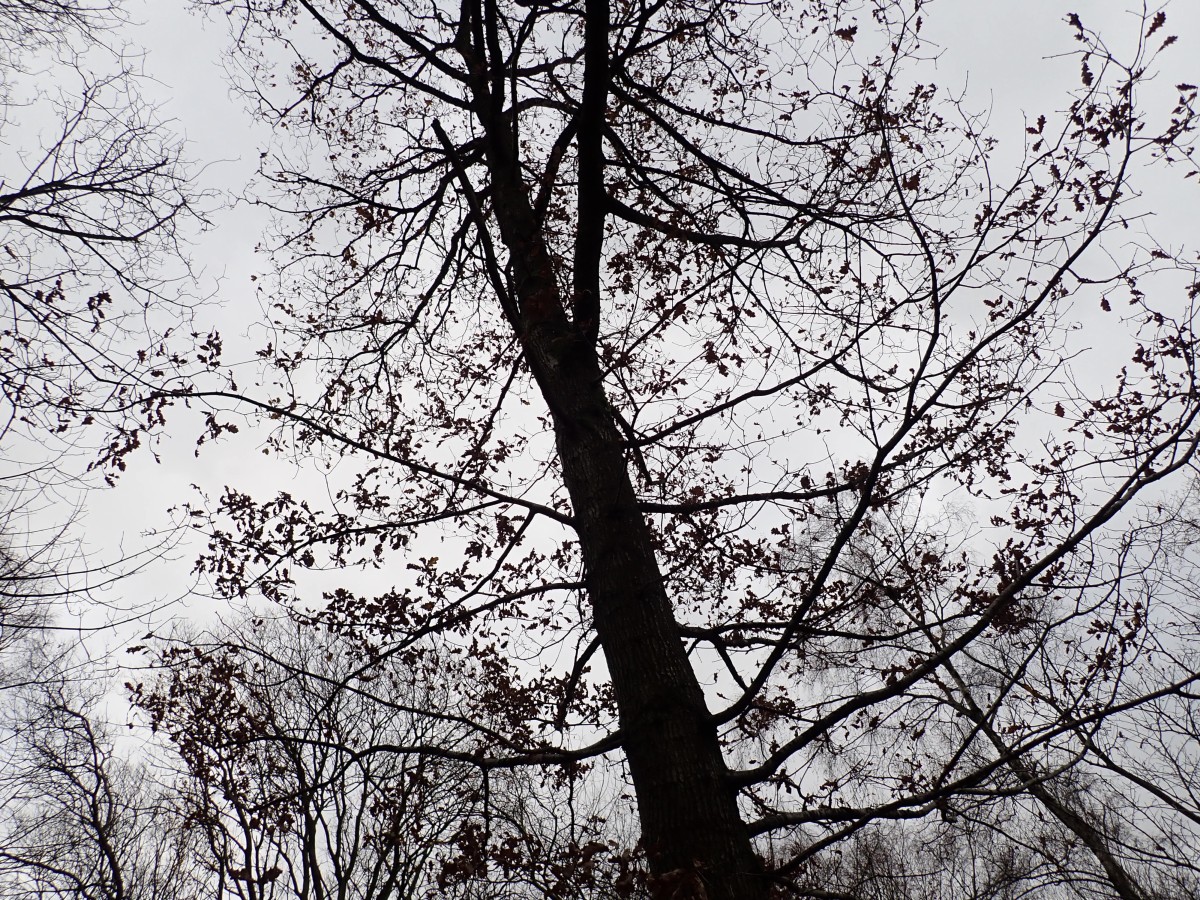
We passed a grassed field at the bottom of a slope in a less steep area of the gorge. Thickly grassed, it showing evidence of meadow species such as Knapweed (Centaurea nigra), Meadowsweet (Ulmaria filipendula) and Creeping Cinquefoil (Potentilla reptans). Cores were dug here revealing a thick turf over a deep soil of brown earth inhabited by worms. Eventually a sandy gravel layer emerged at the bottom.
Our next sample core was under oak but in the Ancient plantation woodland. There was a darker layer, B horizon, under the humus top .
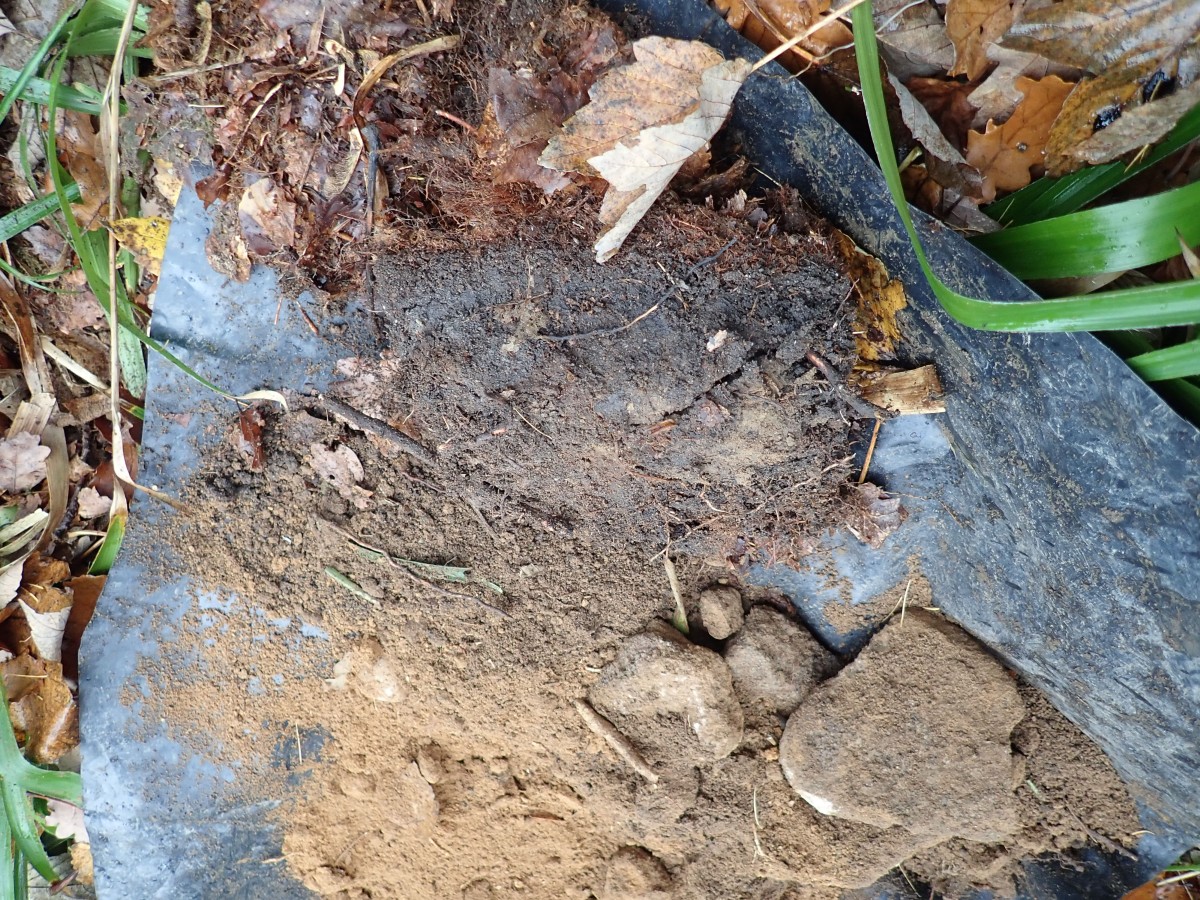
Brown Forest Soils, such as those in our samples tend to develop on acidic, fluvioglacial deposits. The following is adapted from from The James Hutton institute information.
Brown soils, often referred to as Brown Forest Soils or brown earths, are well drained with brownish subsoils where iron oxides created through weathering processes are bonded to silicate clays.
Other properties such as texture and level of fertility depend on the nature of the parent material and the degree of alteration it has undergone. Under natural conditions the soils would form under broadleaf forest which promotes rapid decomposition of plant residue and consequent recycling of plant nutrients.
Profile Characteristics
| Ah |
Surface horizon, usually relatively thin with organic material (mull humus) incorporated throughout mineral matrix. |
| Bw |
Brighter coloured mineral subsoil, with good structural development, generally merges into: |
| C |
Relatively unaltered parent material, usually brightly coloured or colour inherited directly from parent rock. |
h = humus and w= weakly developed. The colour profile was checked on a Munsell Chart. It ranged from 10yr (yellow/red) 3/2 at the top through 10yr 4/4 to 10yr 5/4 at the bottom. In colour terms from brownish- black through brown to yellowish-brown,
We thought the sandstone rocks in Horizon C may have tumbled from the gorge sides suggesting relief and slope processes had played a role.
The ancient woodland had an abundance of fern and bryophyte species in particular this attractive Hard Shield Fern (Polystichum aculeatum), a fern that often grows in calcareous flushes.
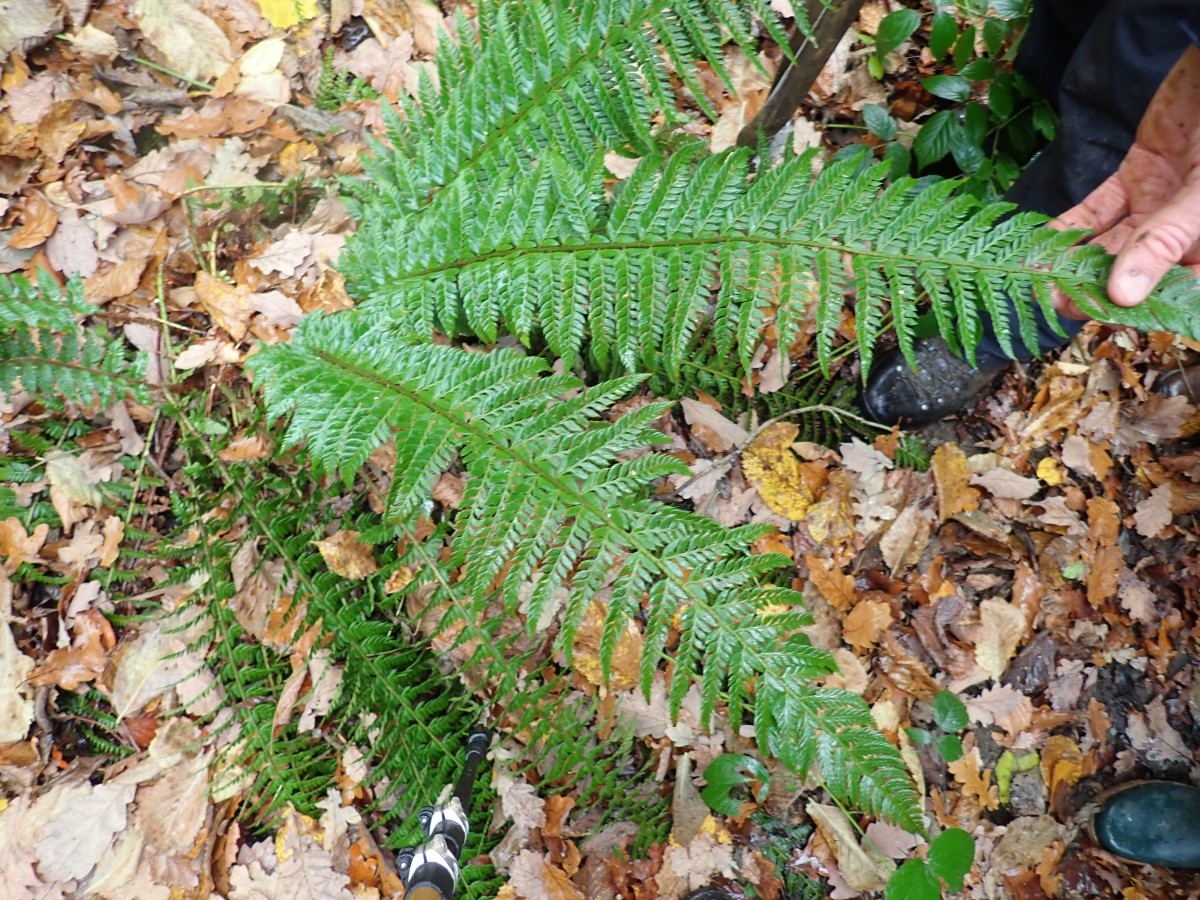
Certain plant species act as indicators of ancient woods including Hard Shield Fern. Other indicators were present: Opposite-leaved golden- saxifrage, Scaly male fern, Honeysuckle, Great wood-rush, Wood Sorrel, Barren strawberry, Lesser celandine, Common tamarisk moss.
One of the cores revealed this fungi at some depth, It proved to be an (Elaphomyces granulatus) or False Truffle. Inedible unlike the true truffle, it is ectomycorrhizal, often found under spruce trees but occasionally with other conifers. Normally these fungi would rely on Wild Boar or Squirrels digging them up, eating them and excreting the spores elsewhere.
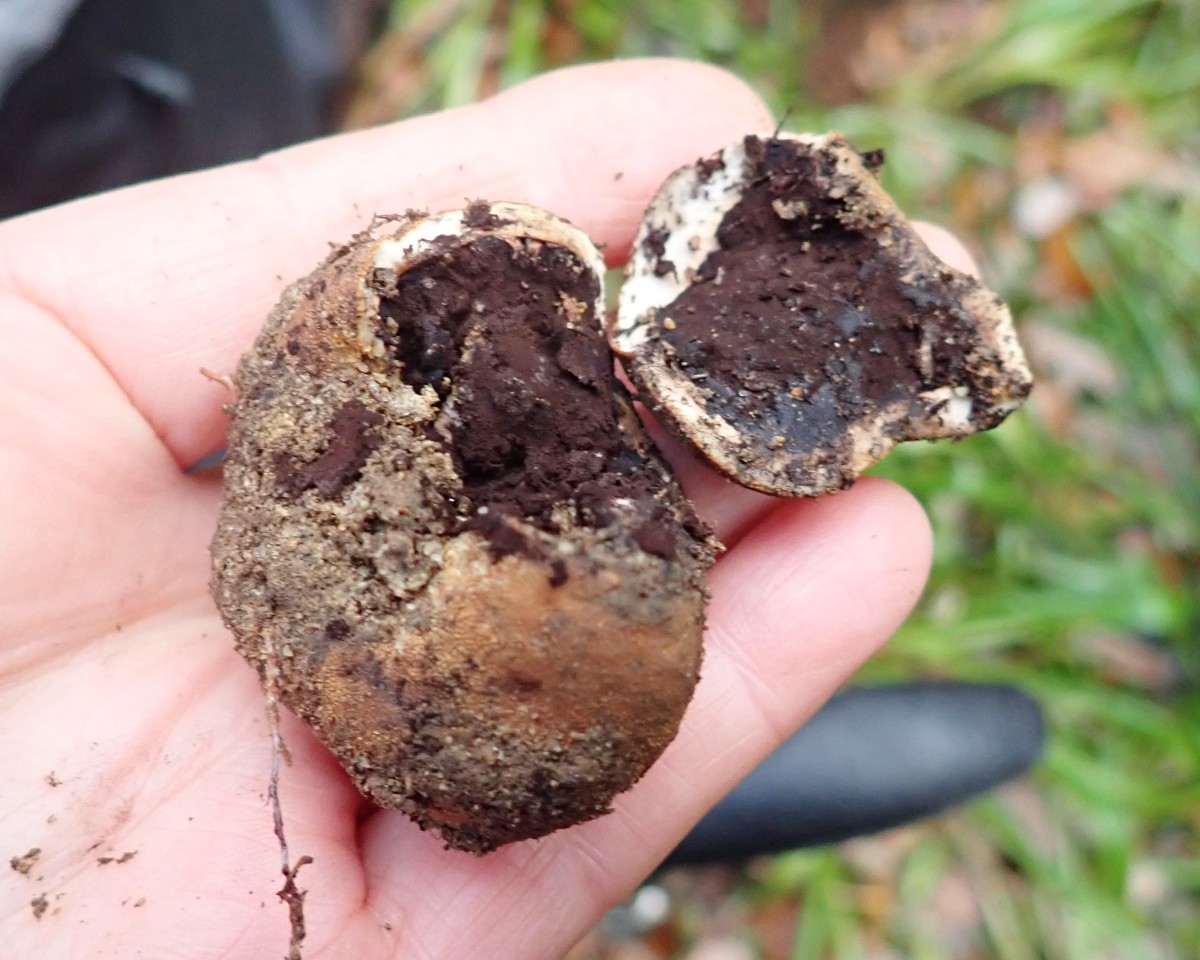
The walls surrounding Ancient woodlands often display a range of Lichens and Bryophytes. The lichen below with many fingers projecting from its stalks is Cladonia polydactyla) another inhabitant associated with ‘old growth’ woodland. Growing beside is a common woodland moss (Polytrichum sp.)

Reference:
Forestry Commission
James Hutton Institute
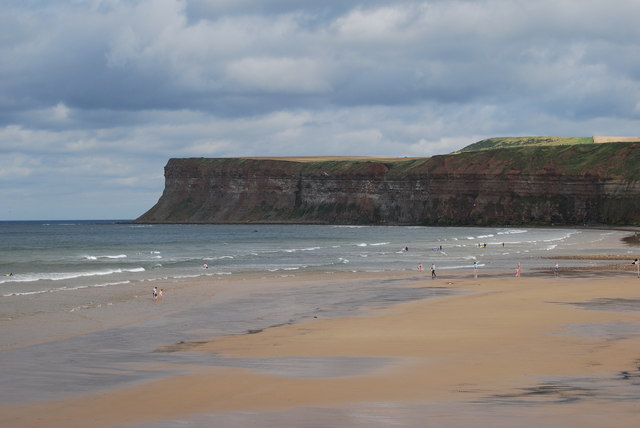
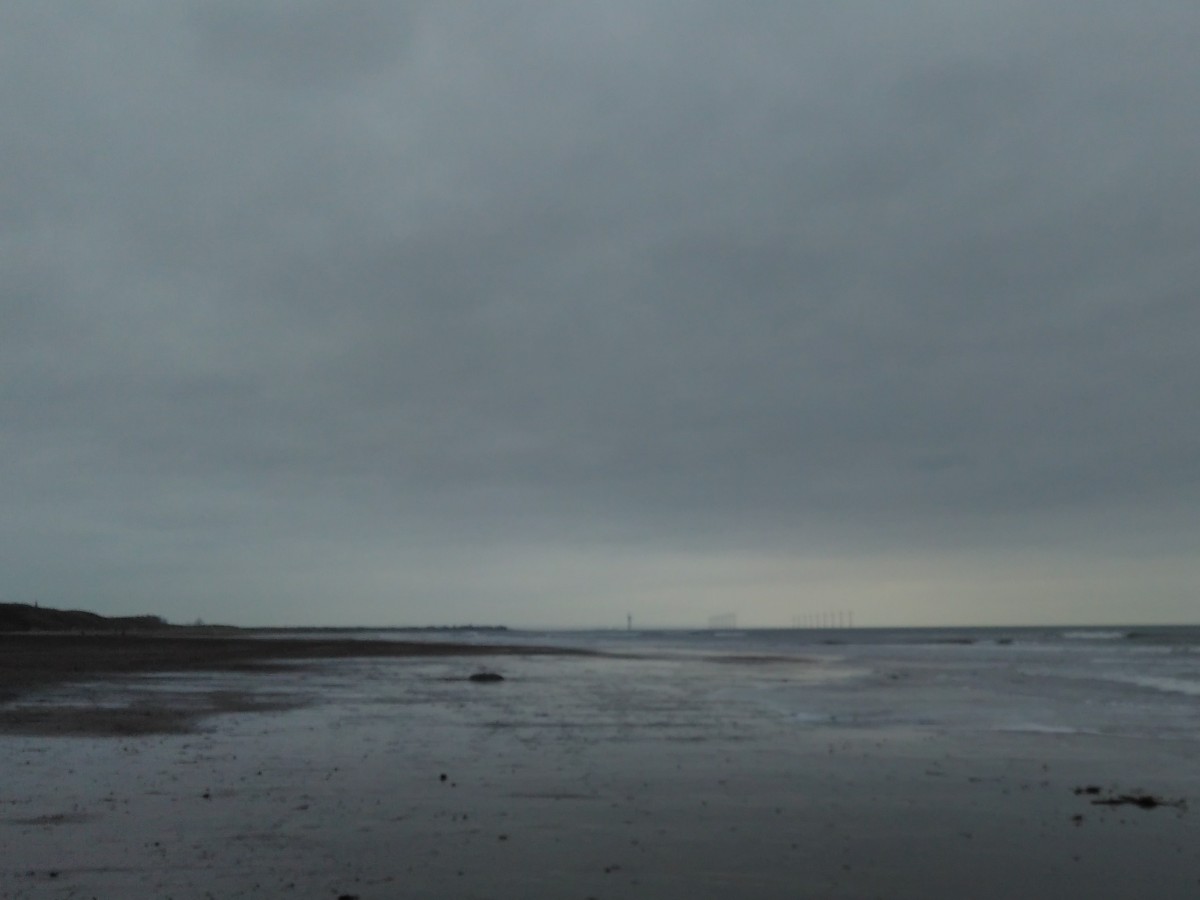

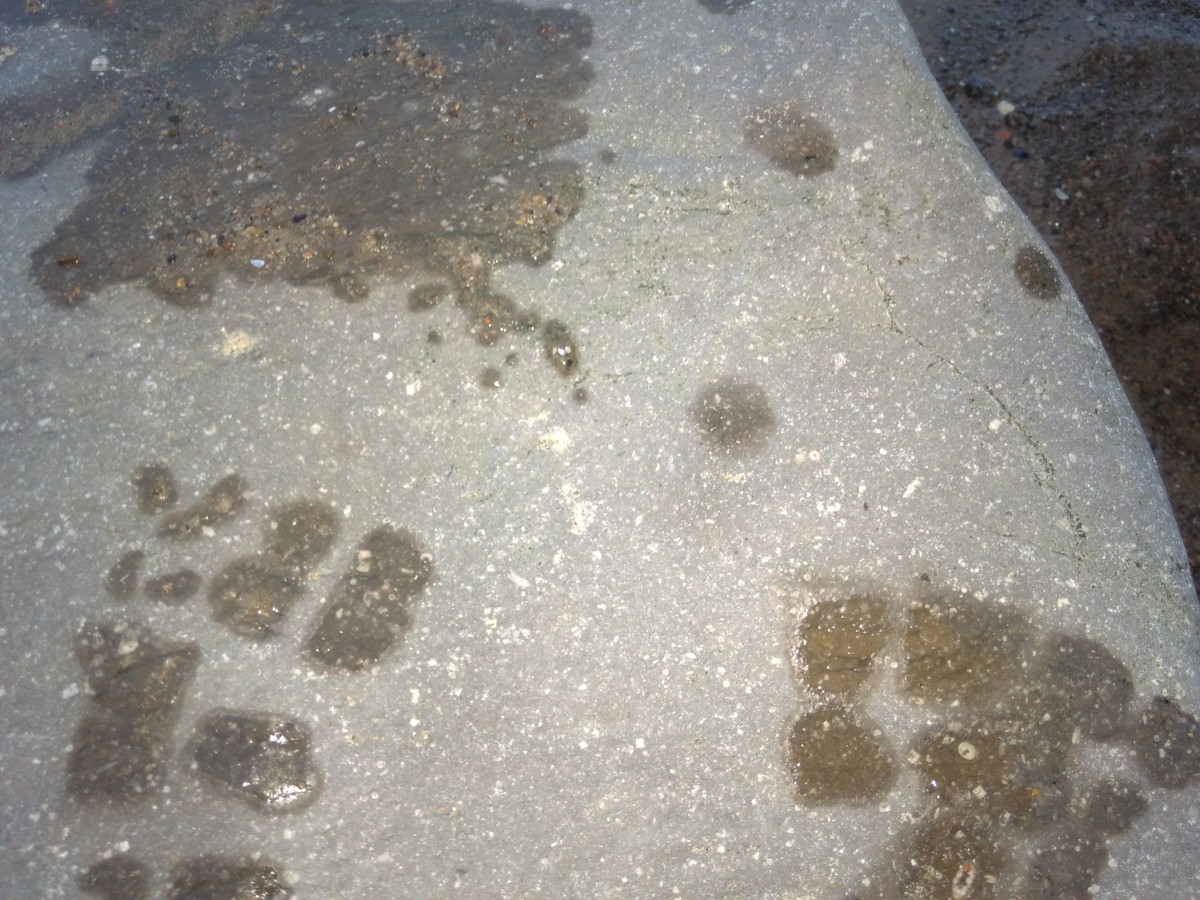


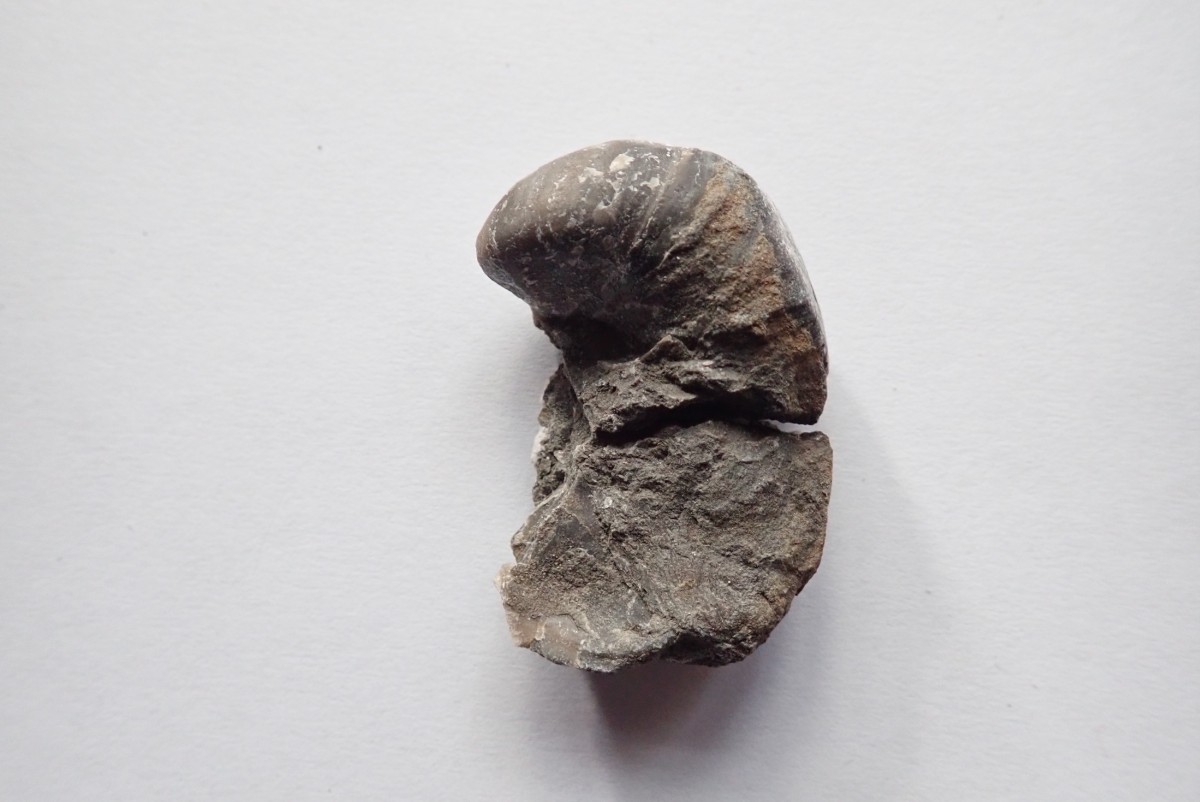




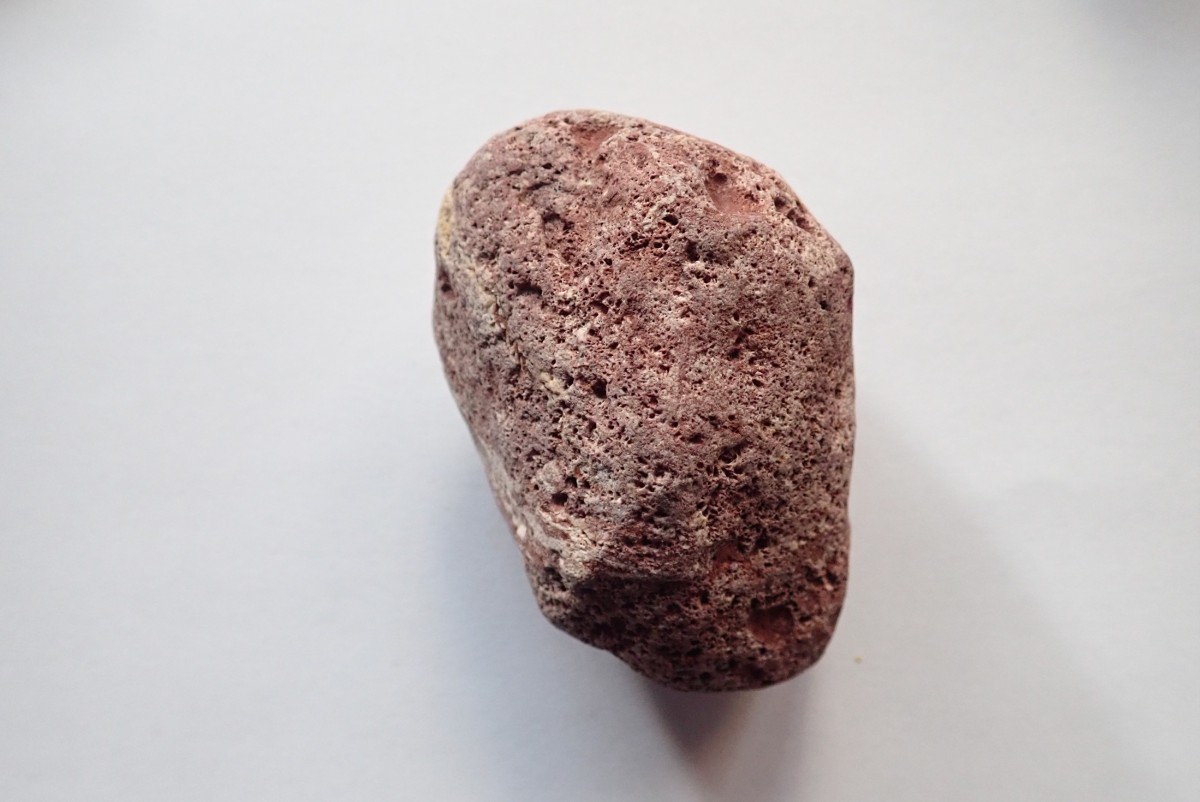
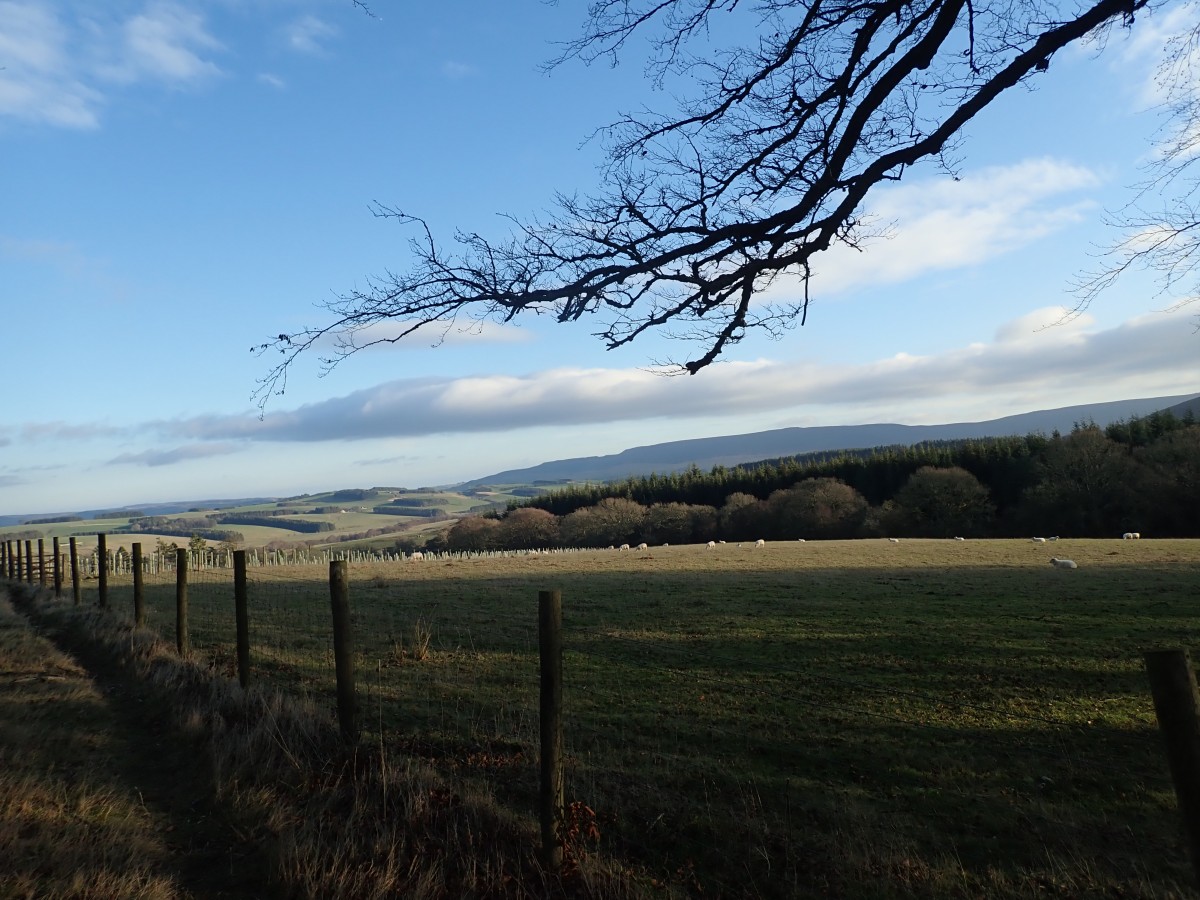

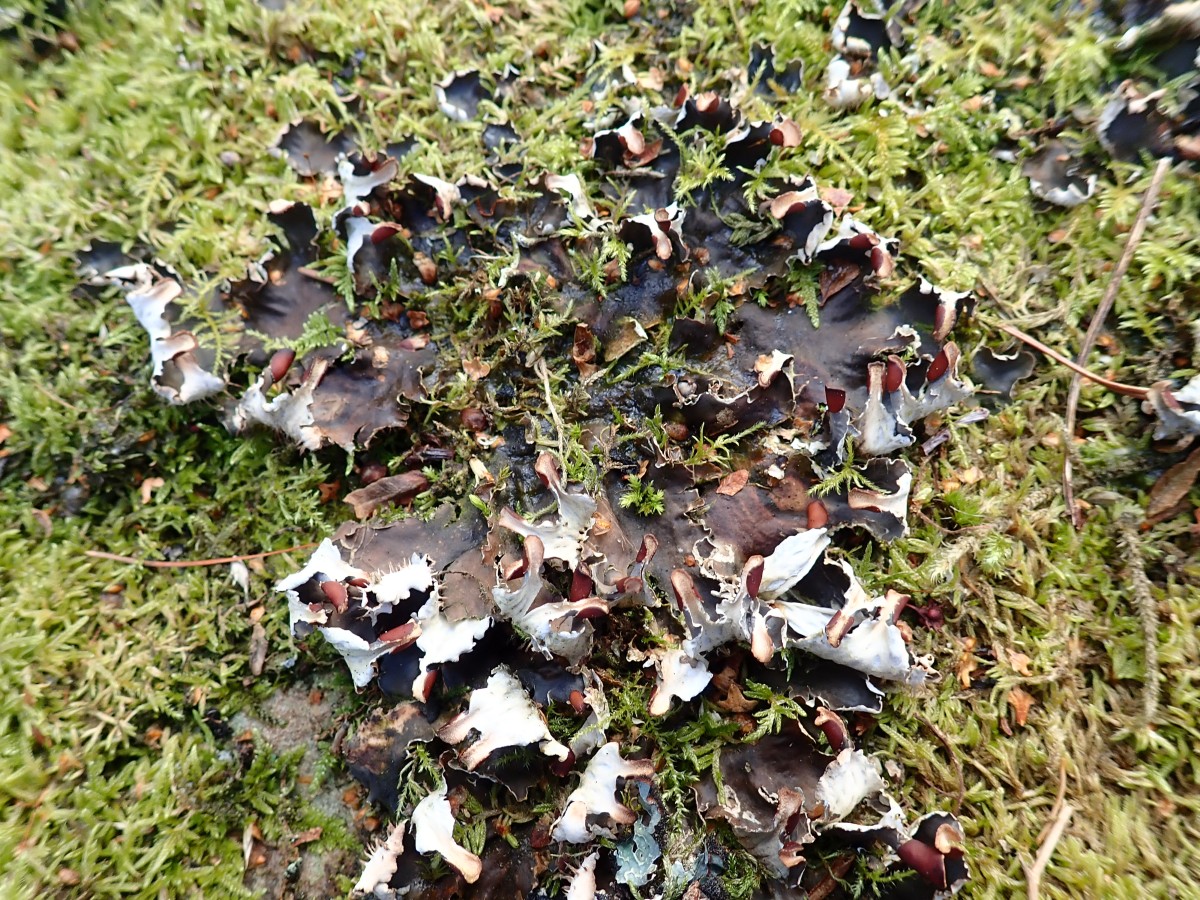
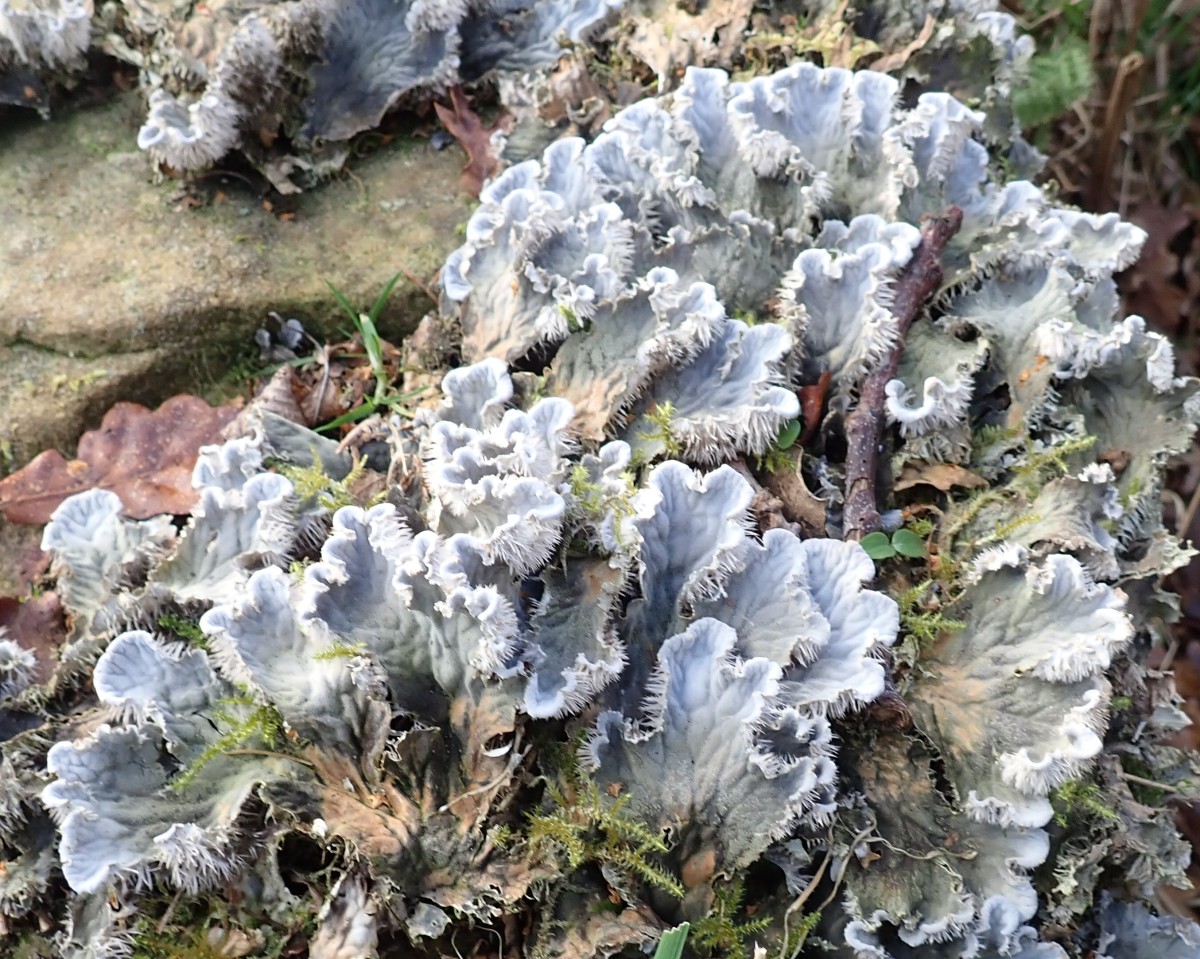



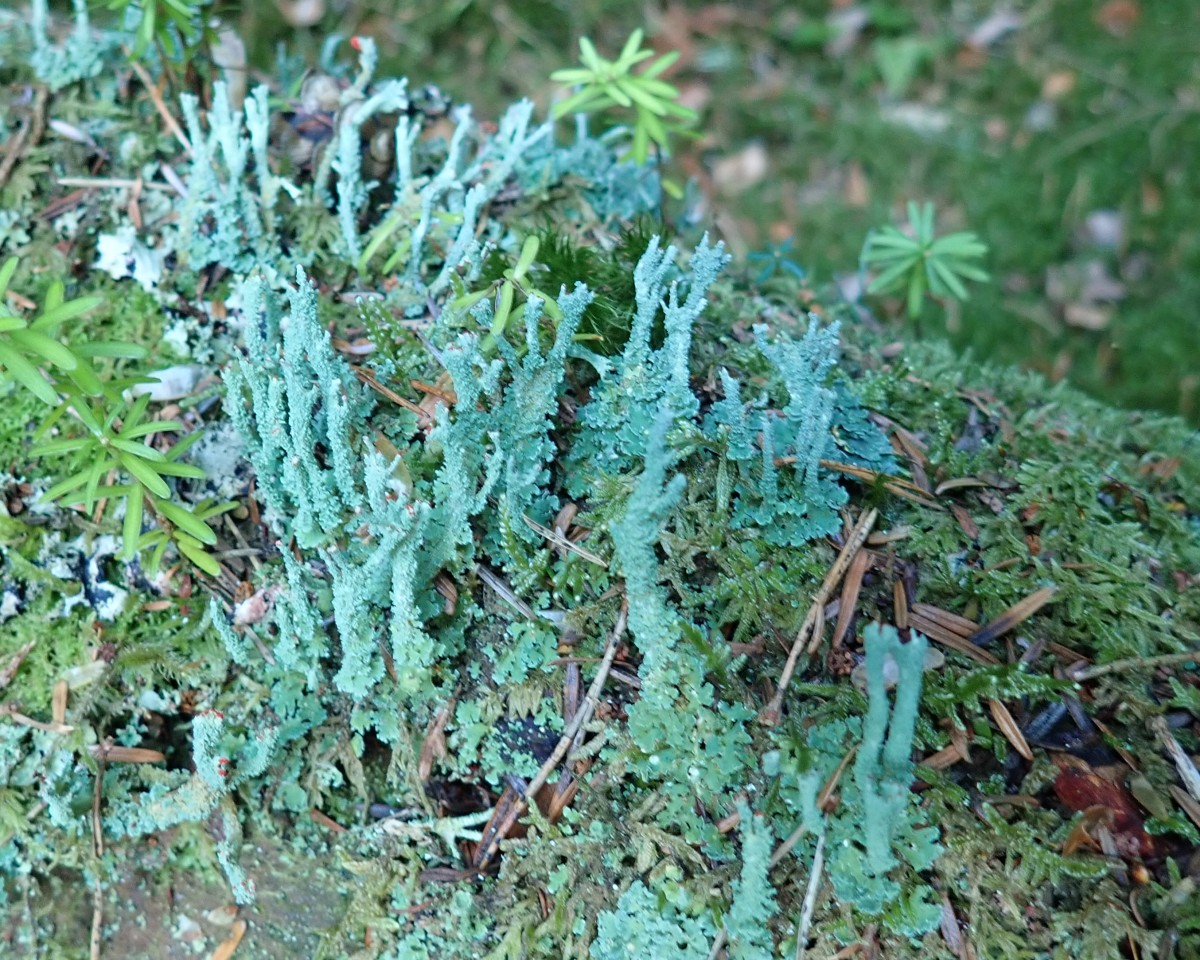
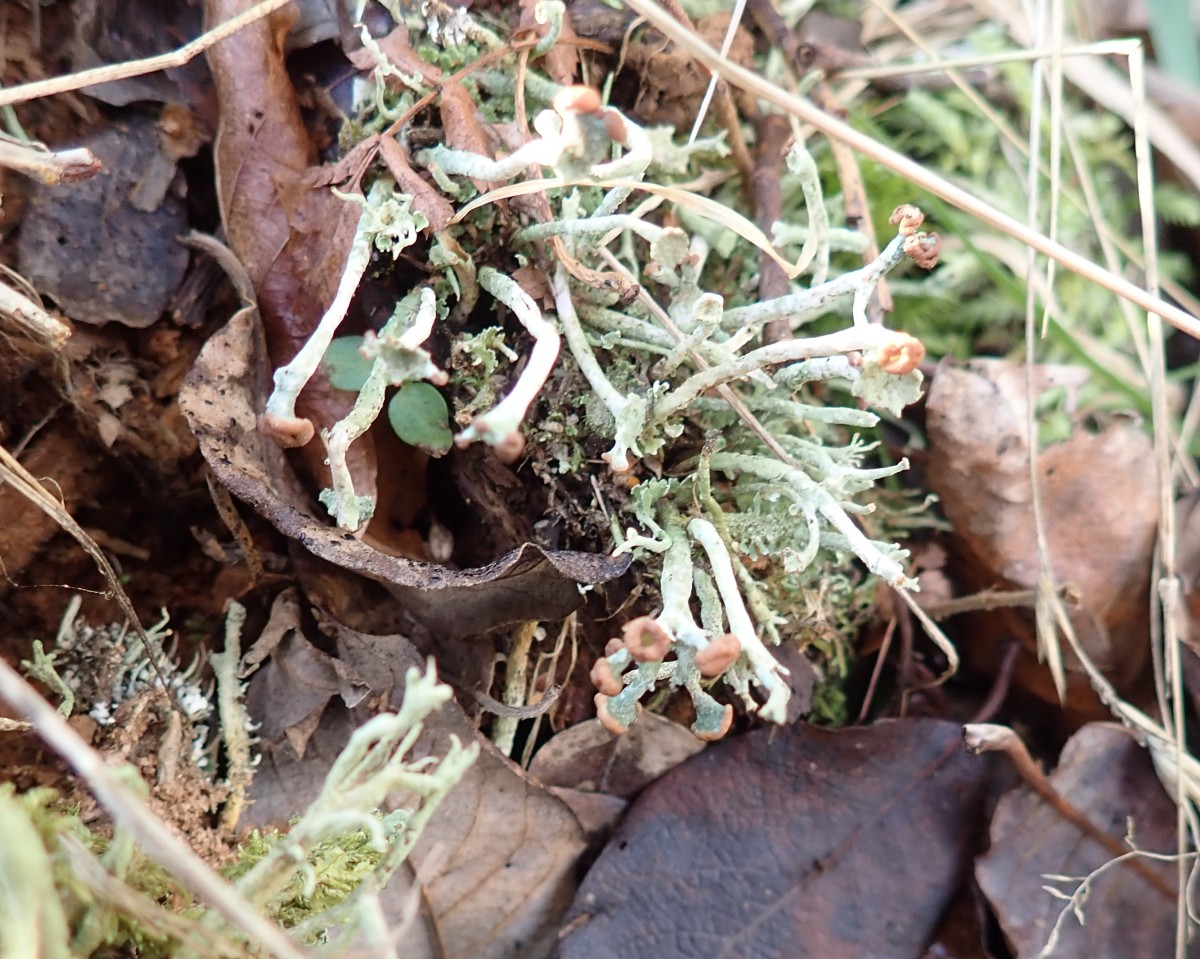


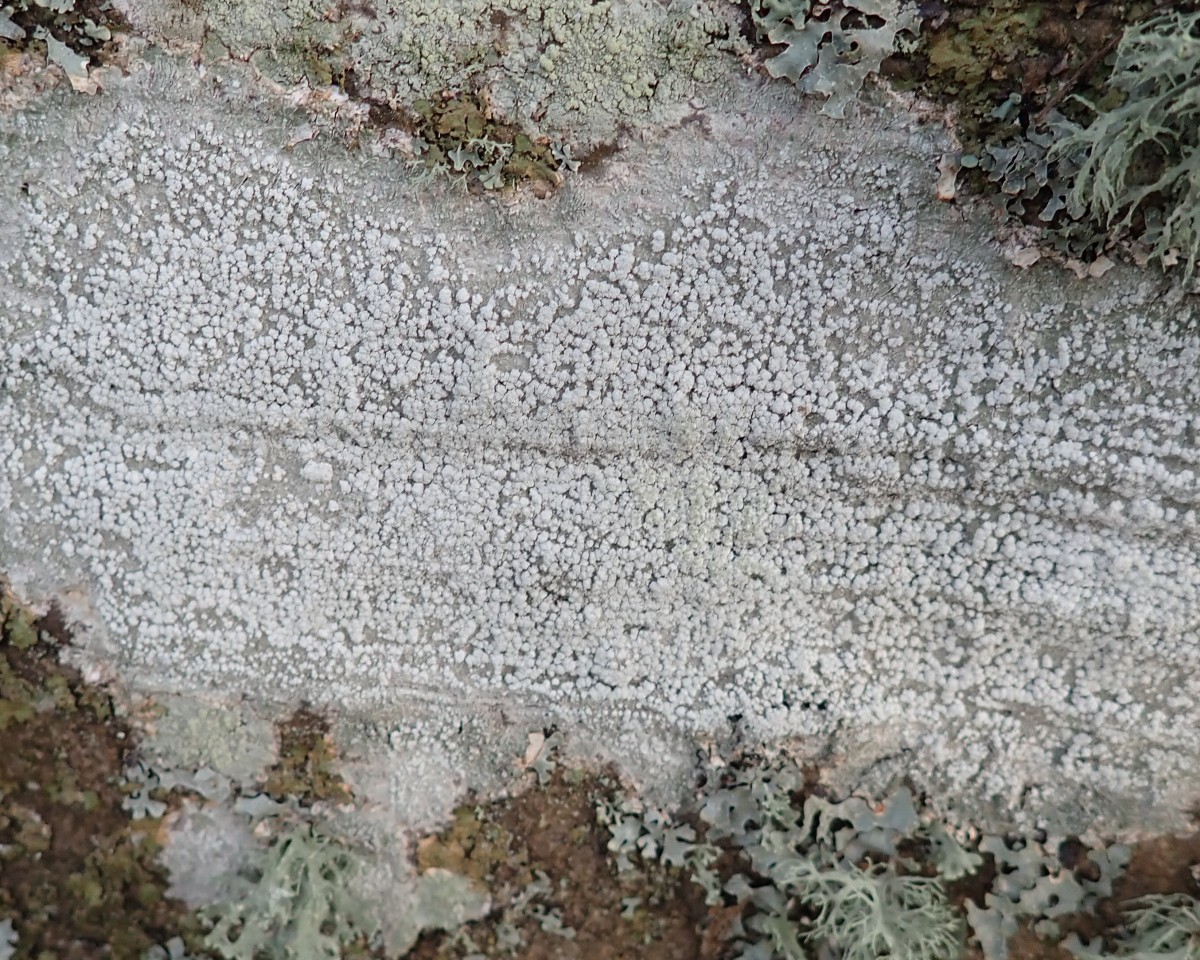
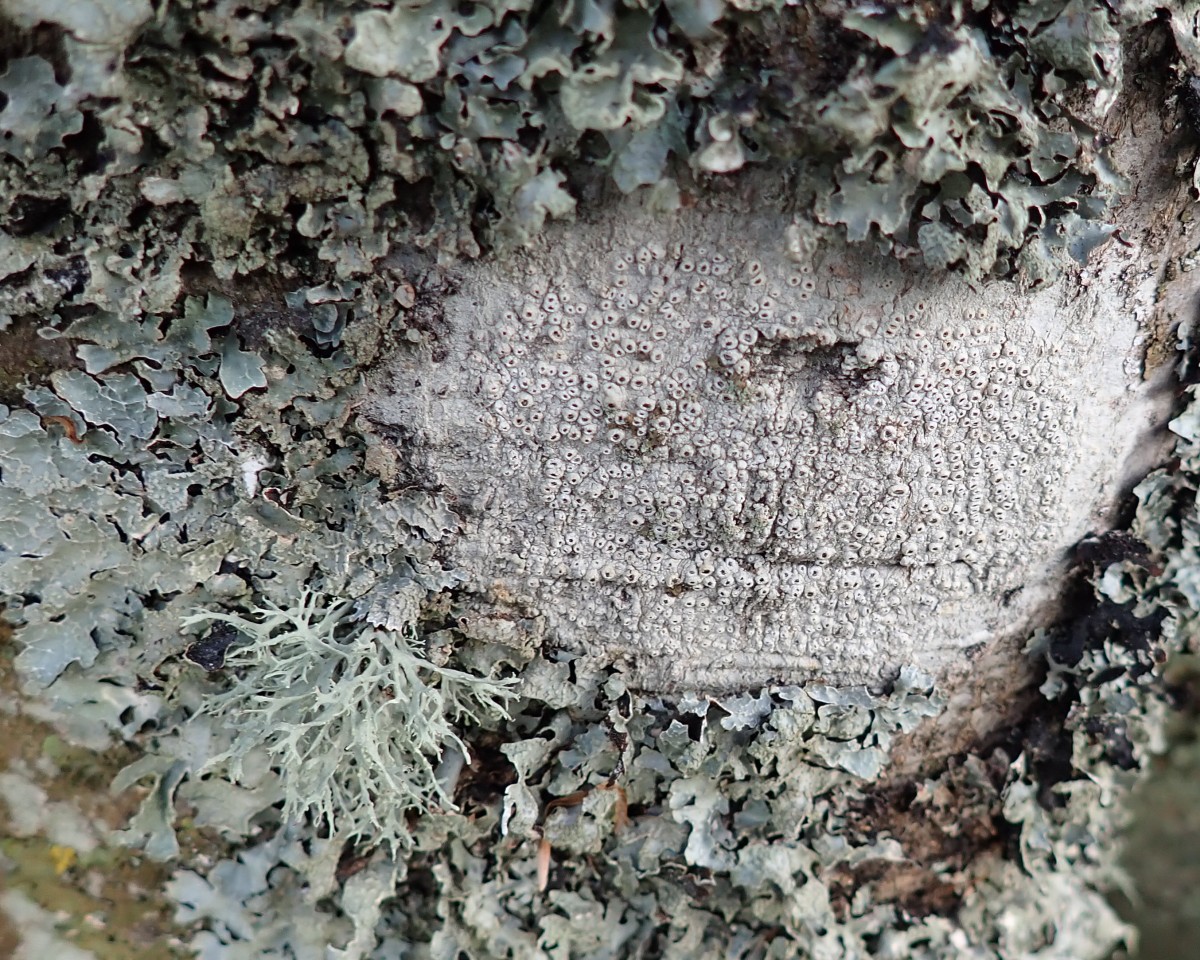
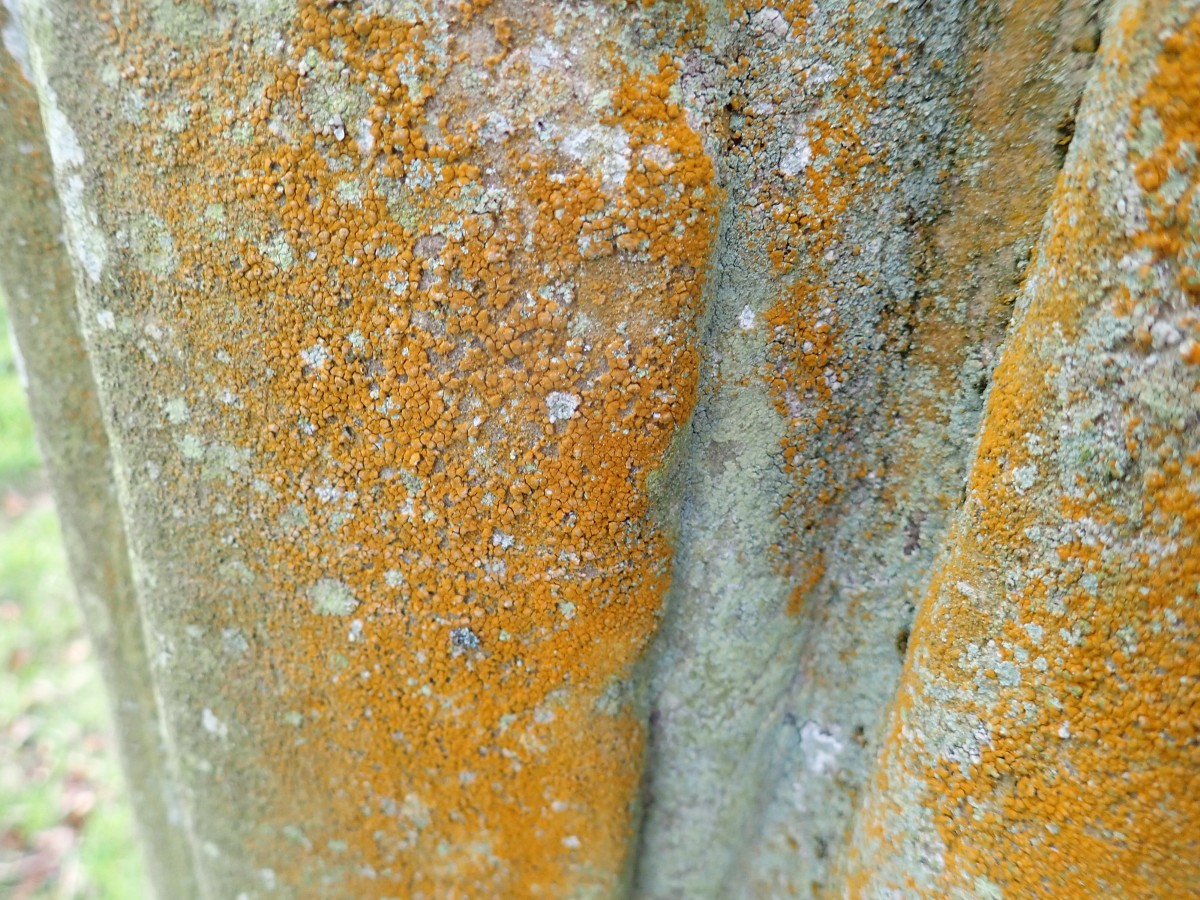


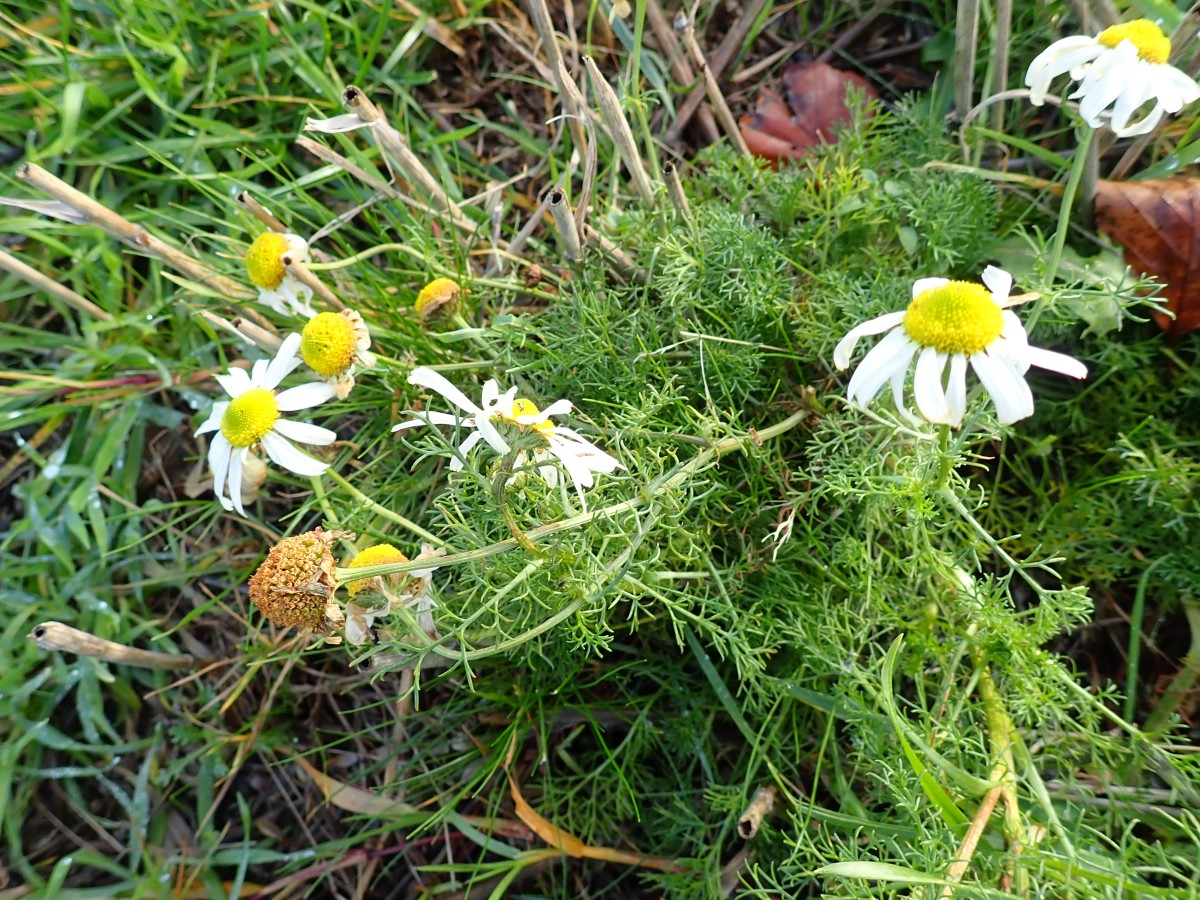
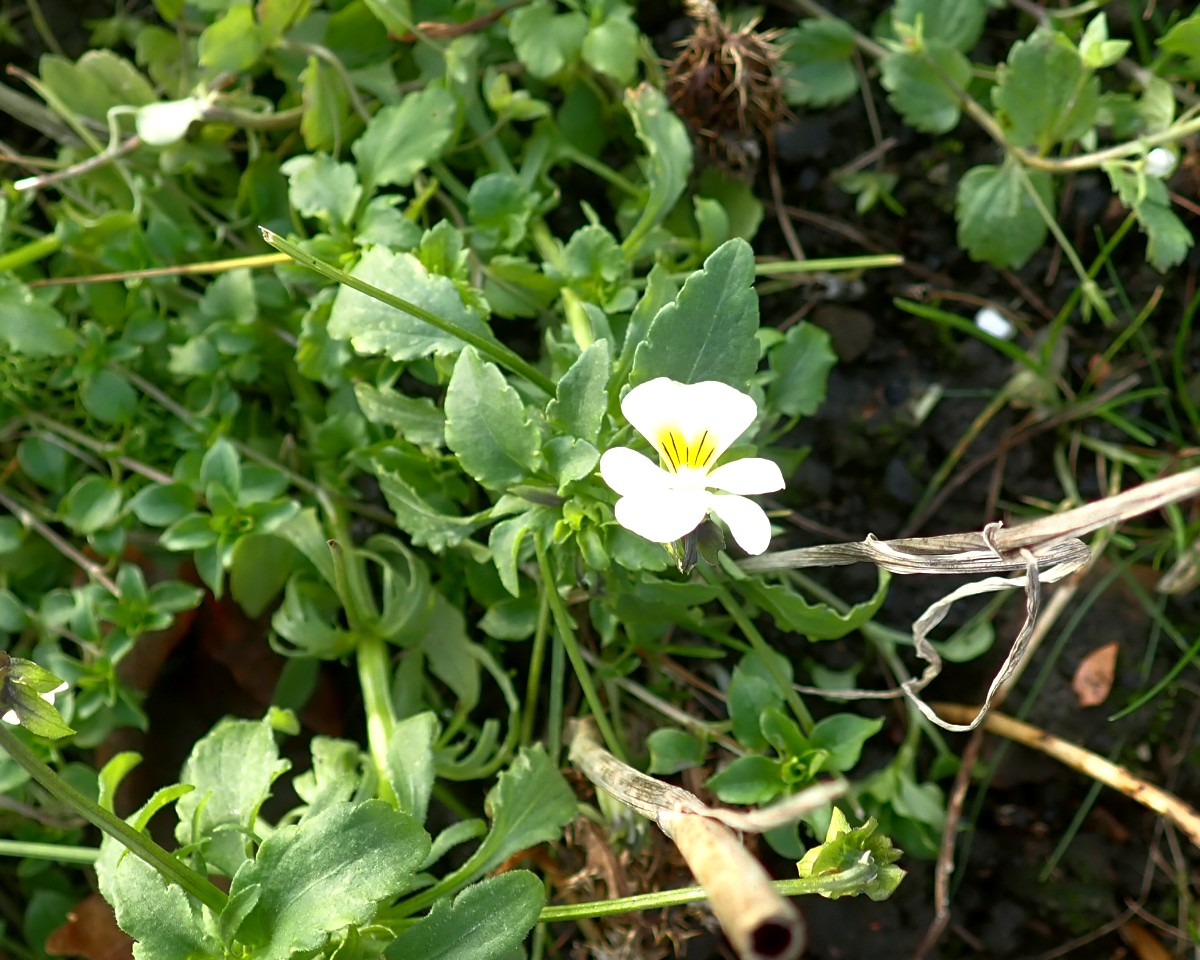
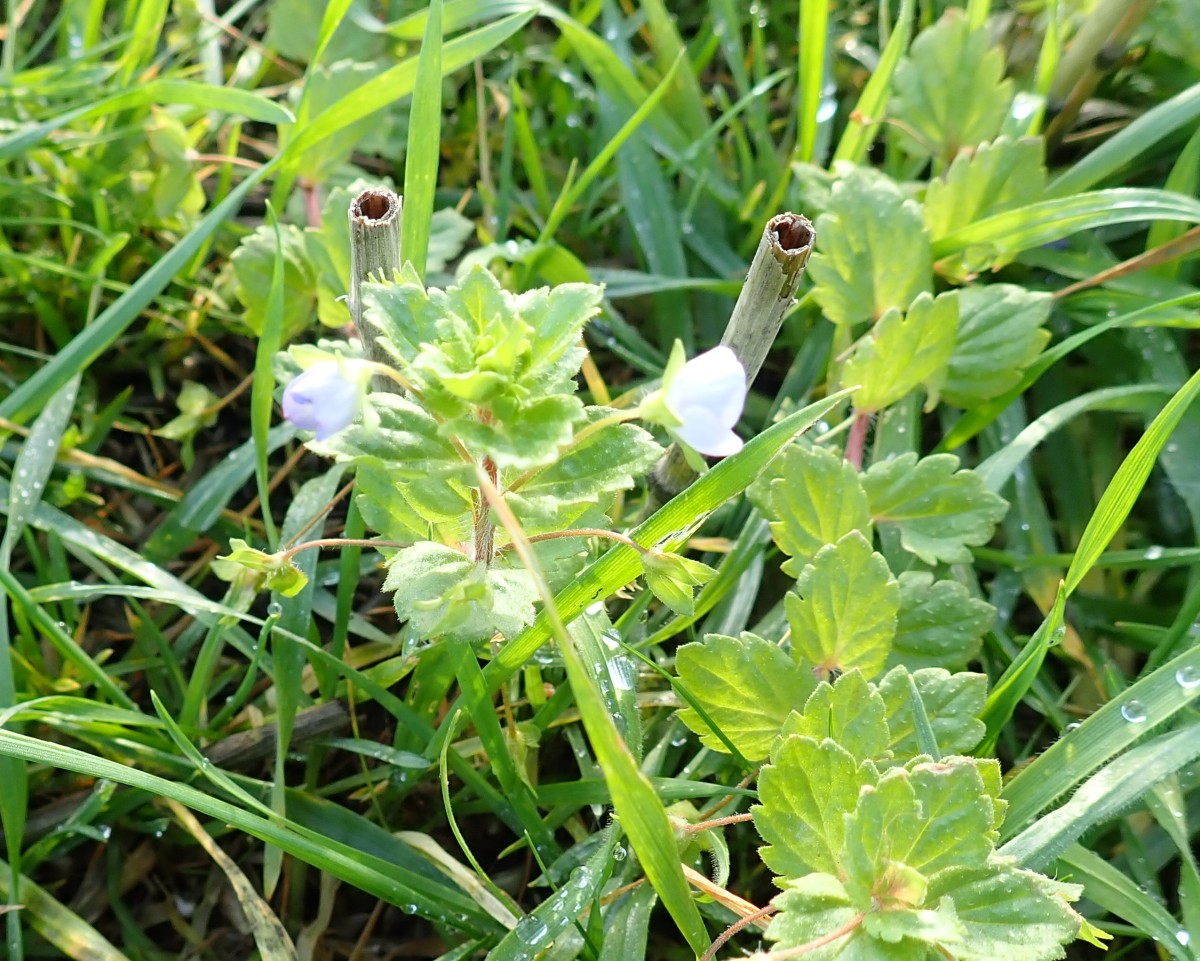
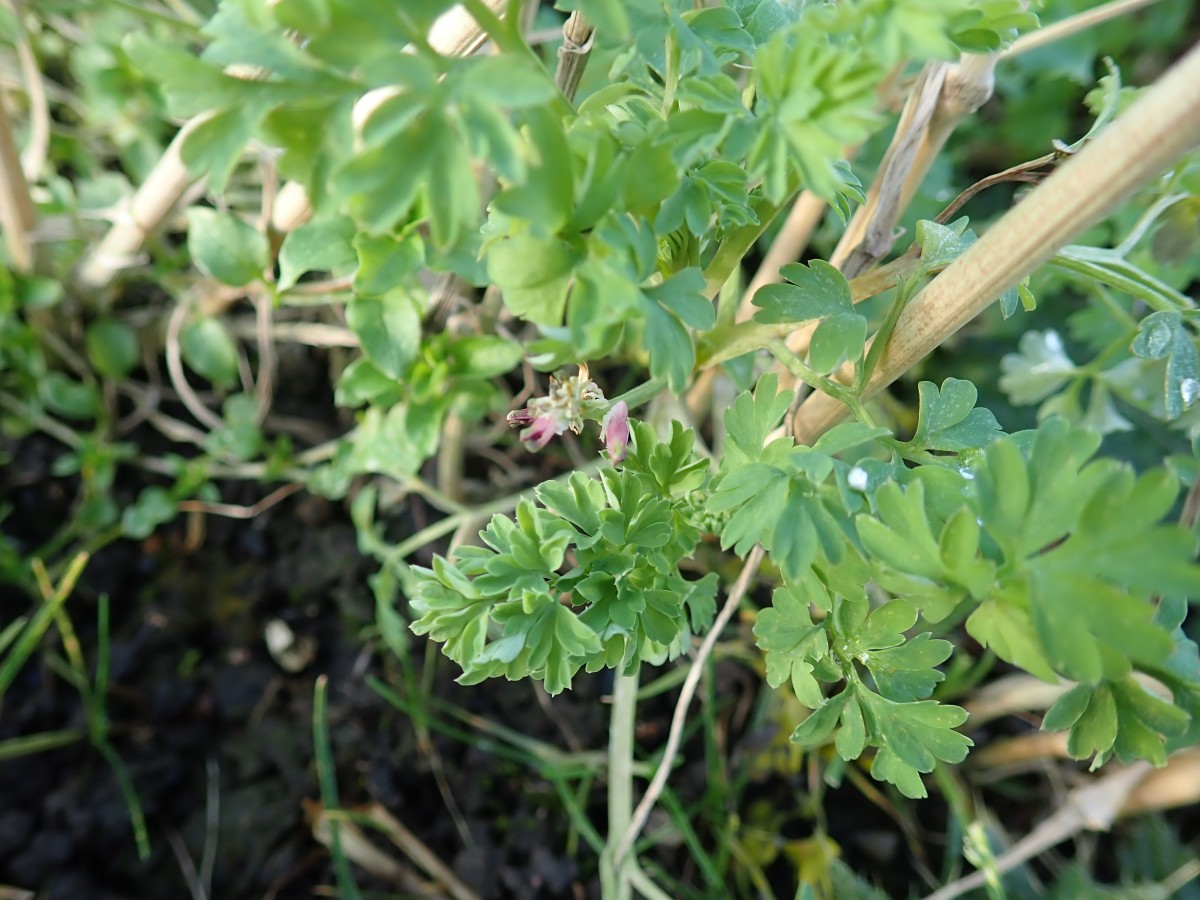


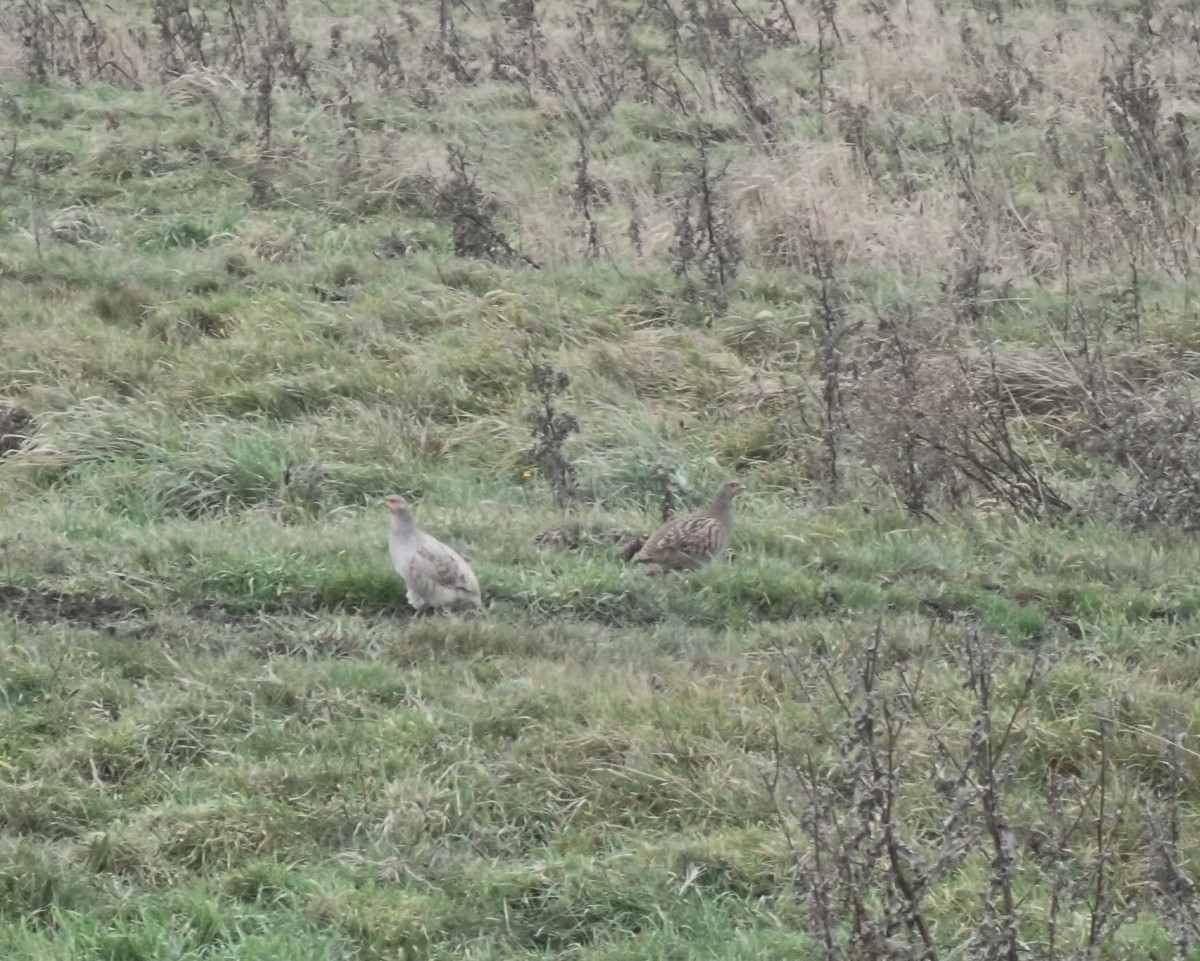
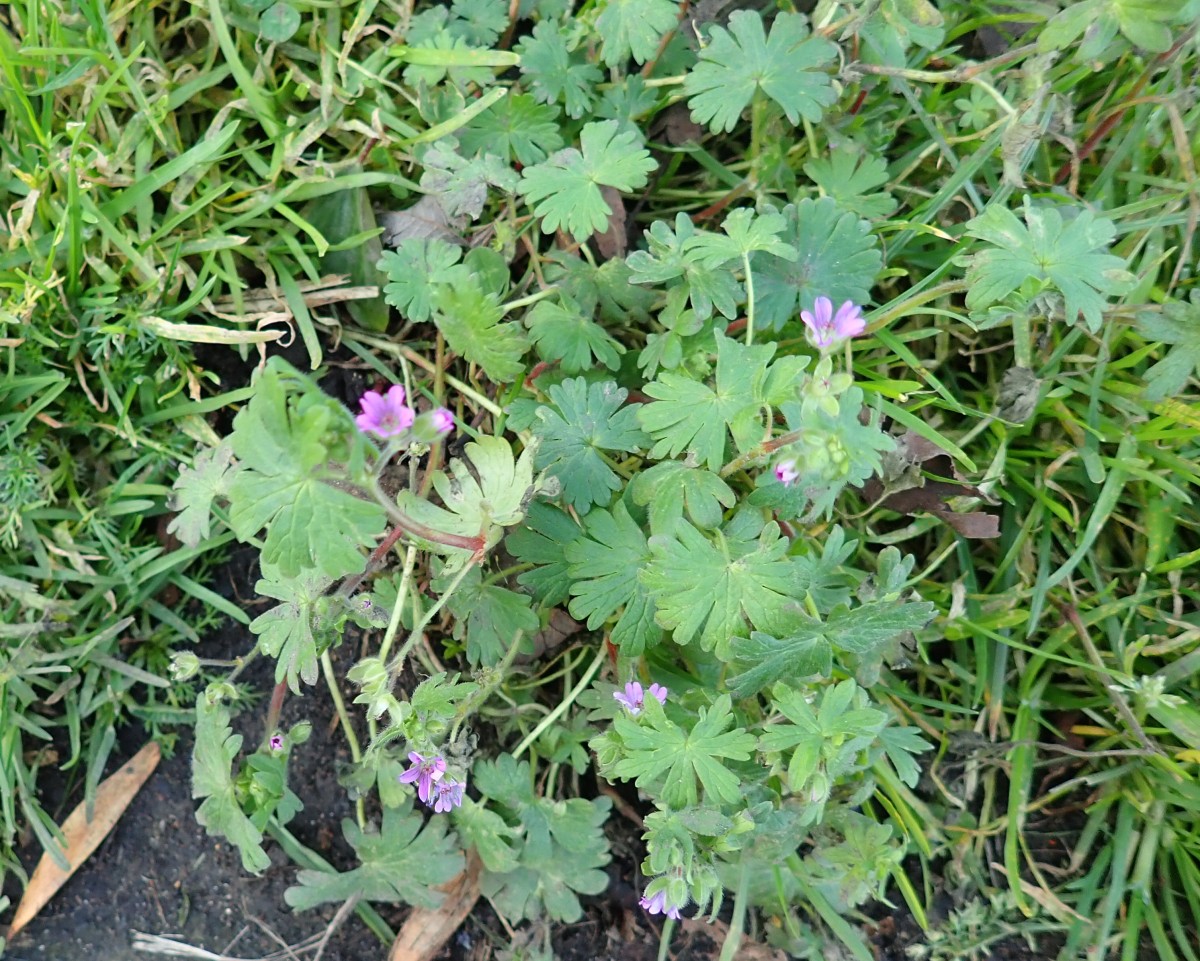


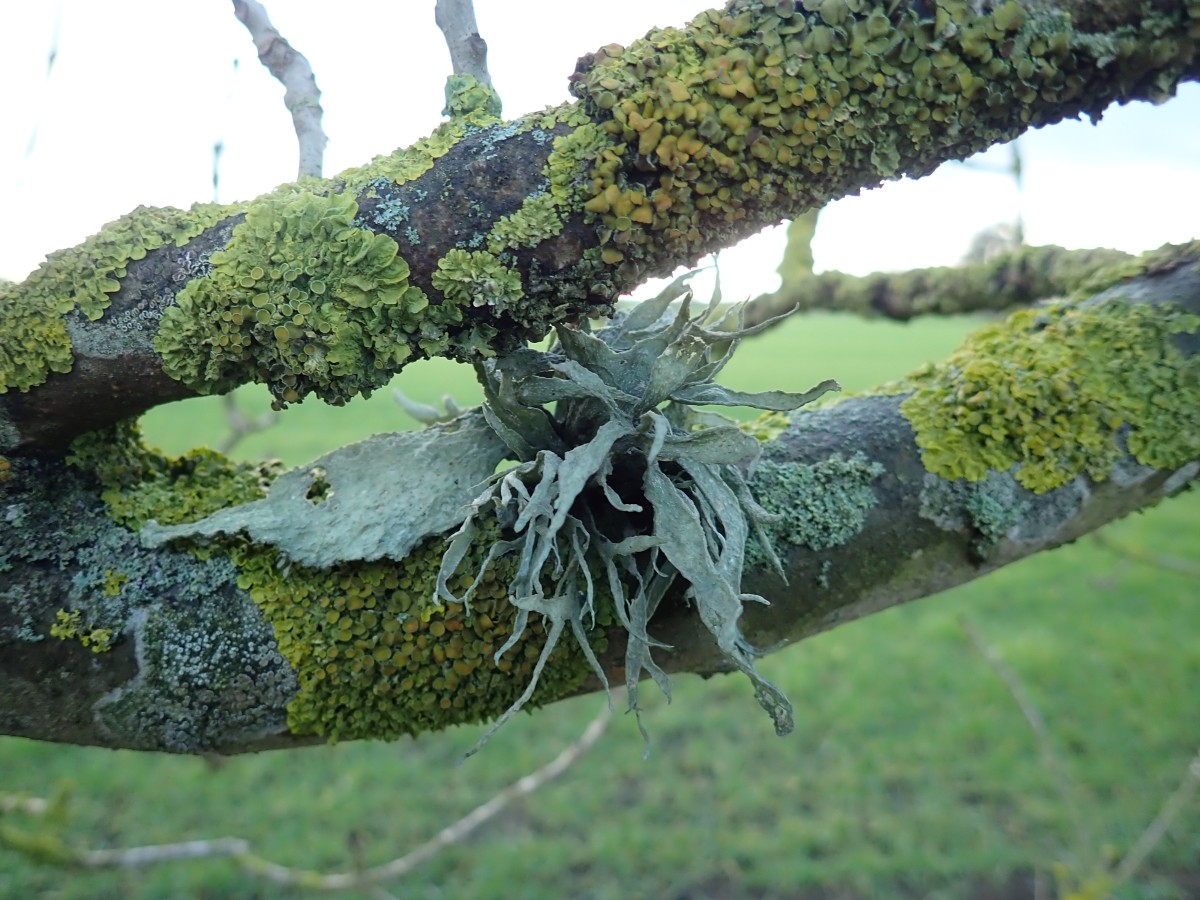
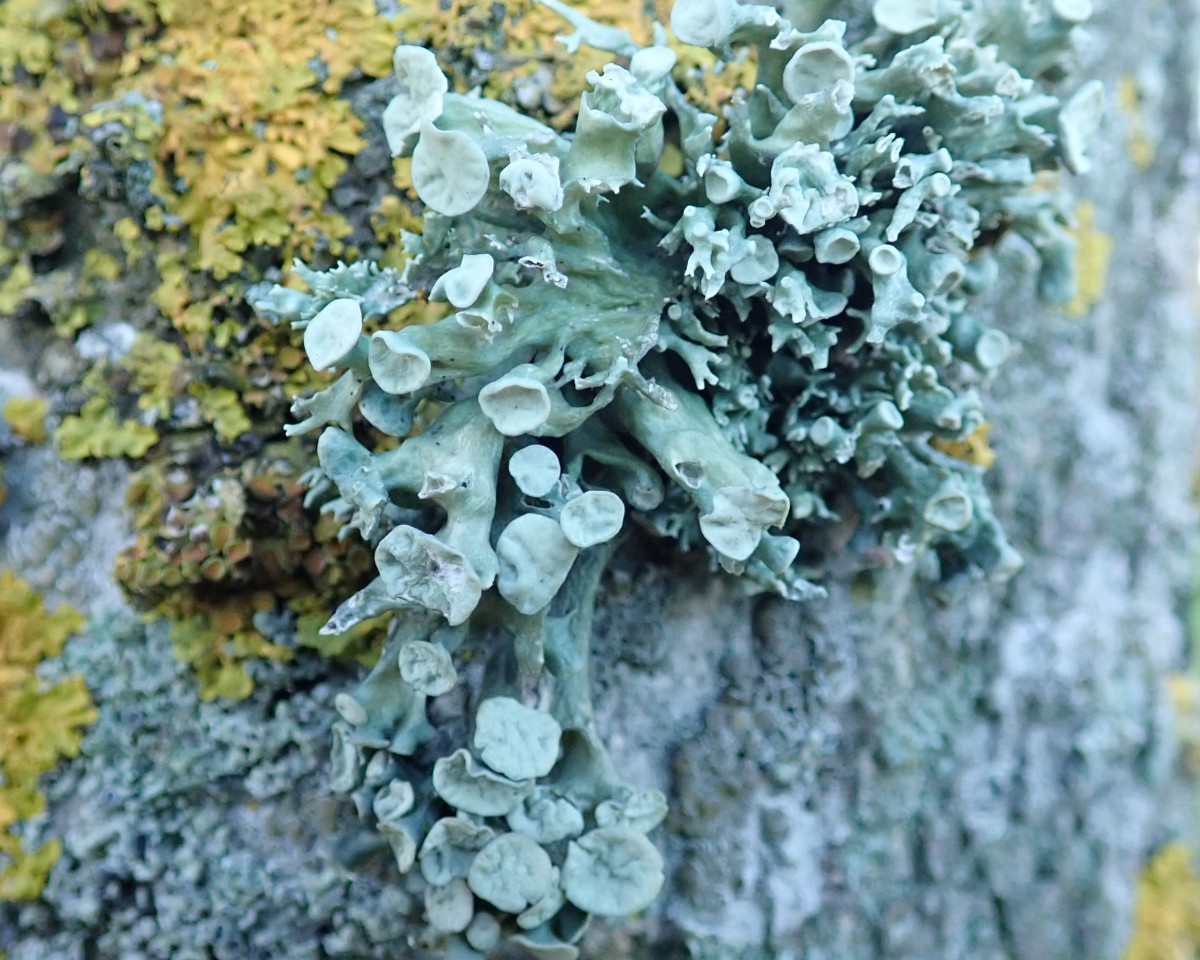

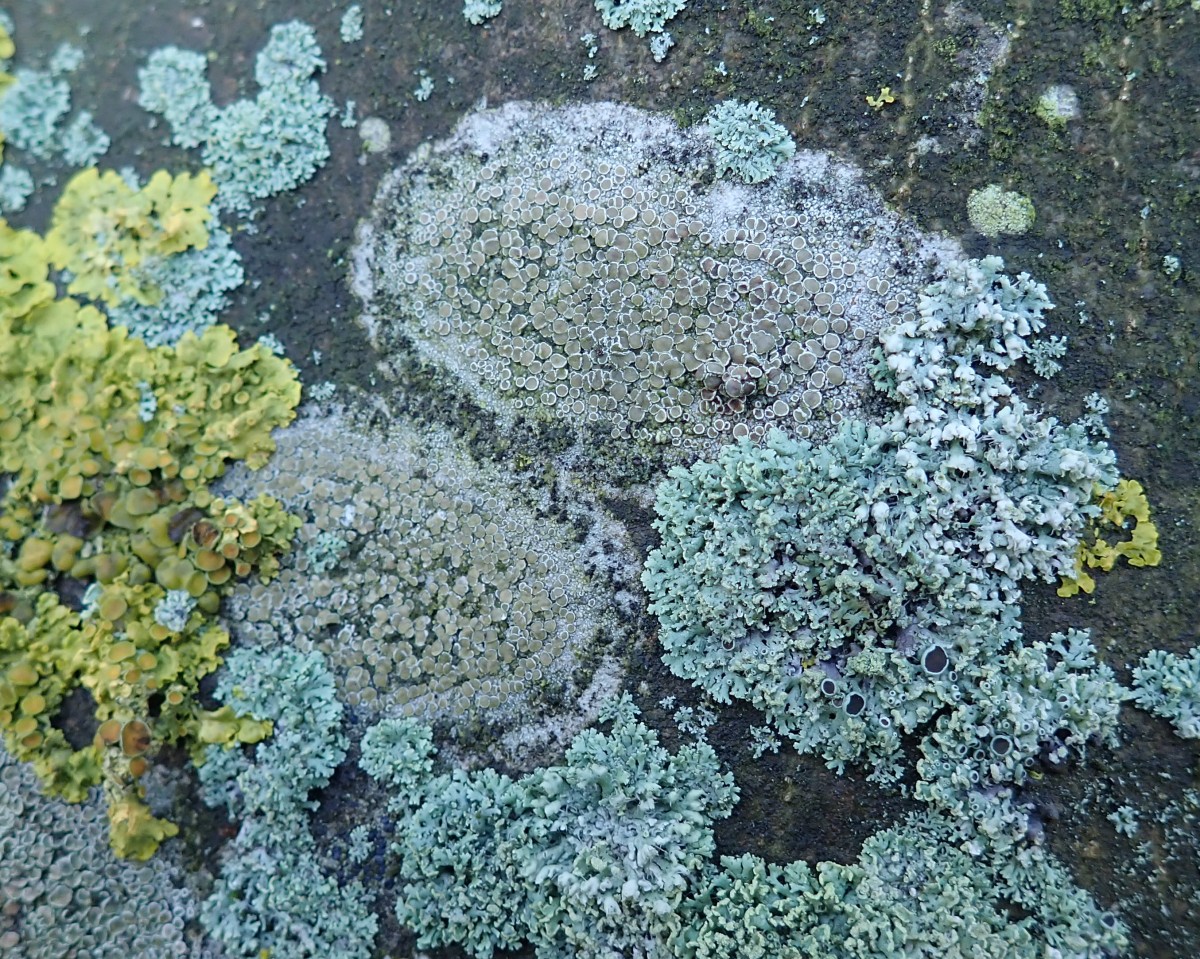
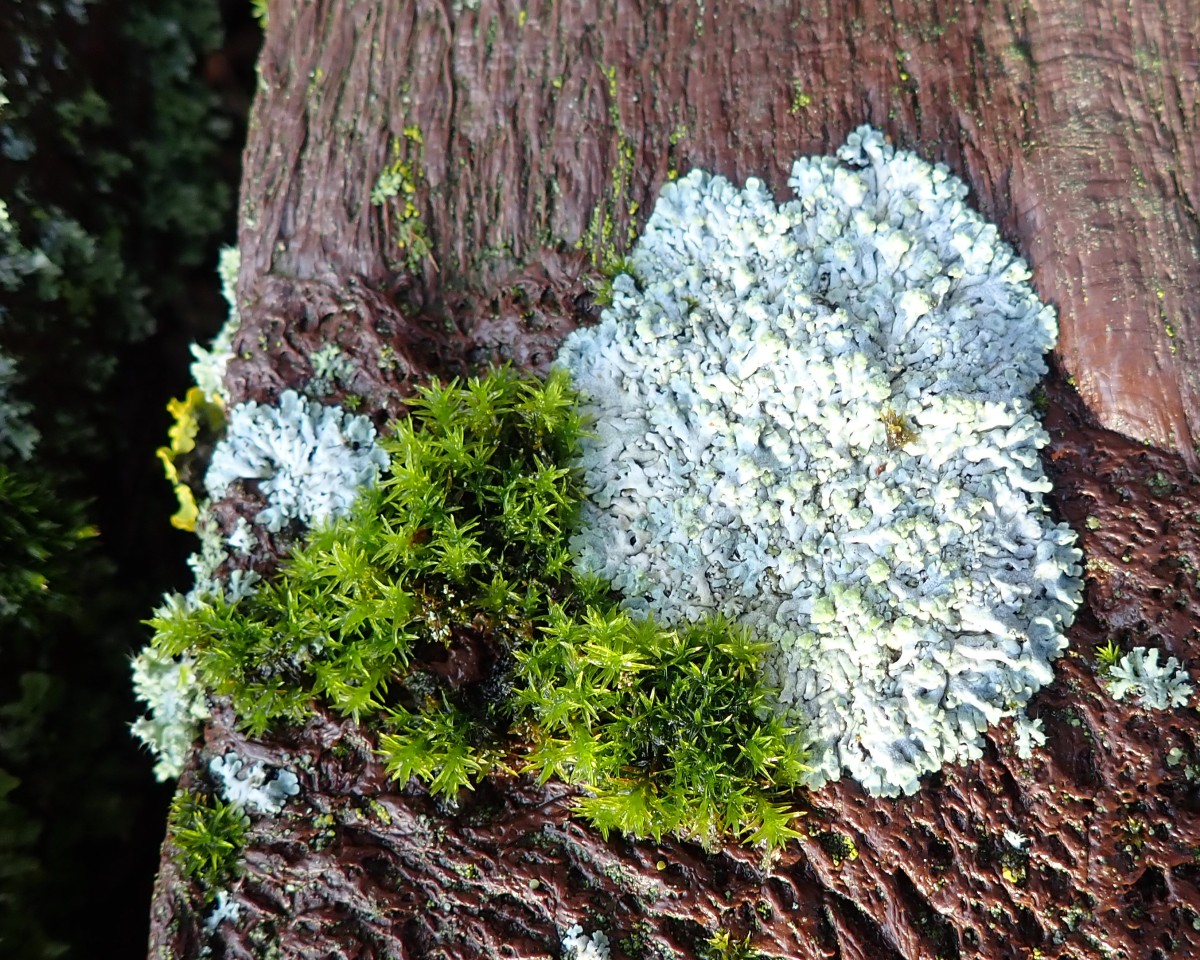



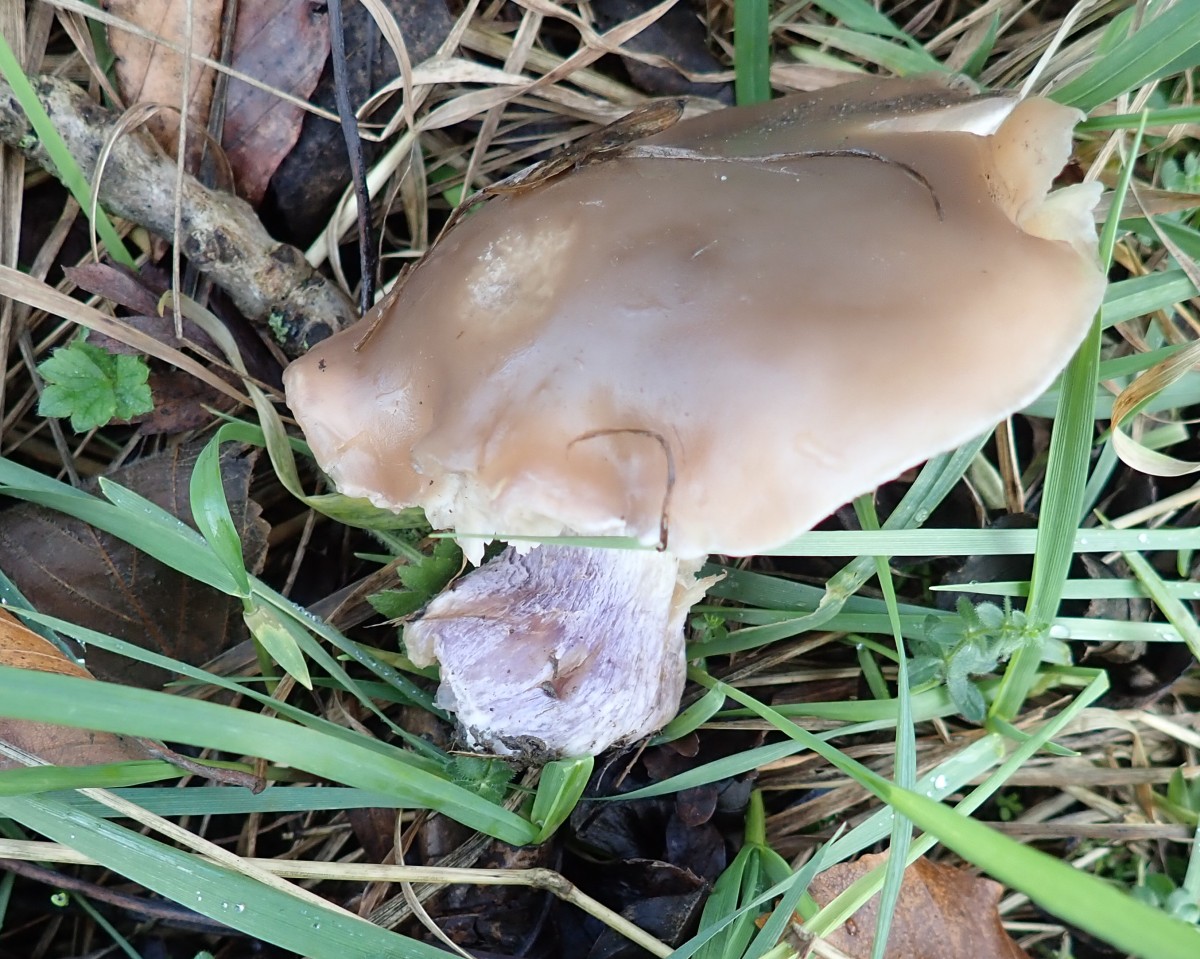

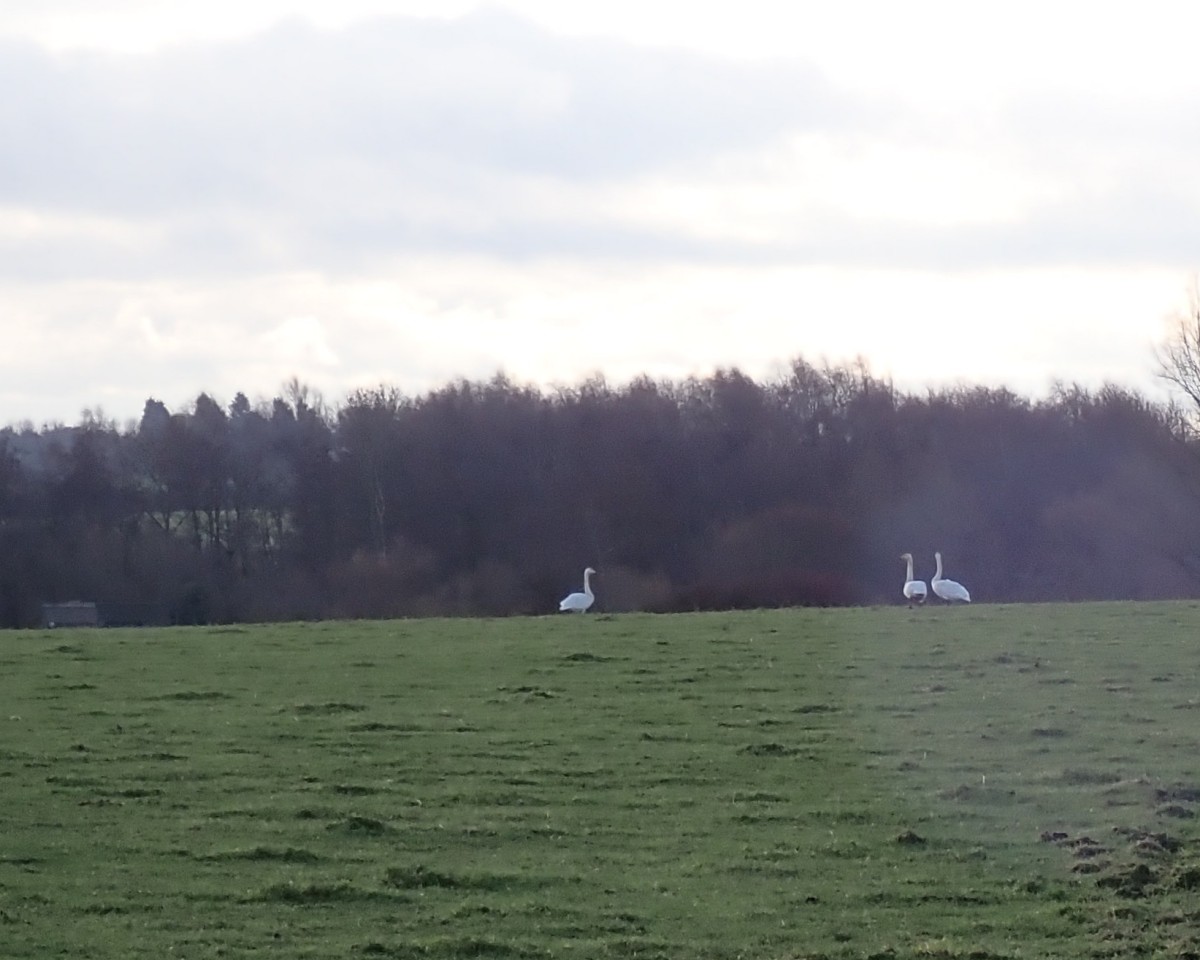
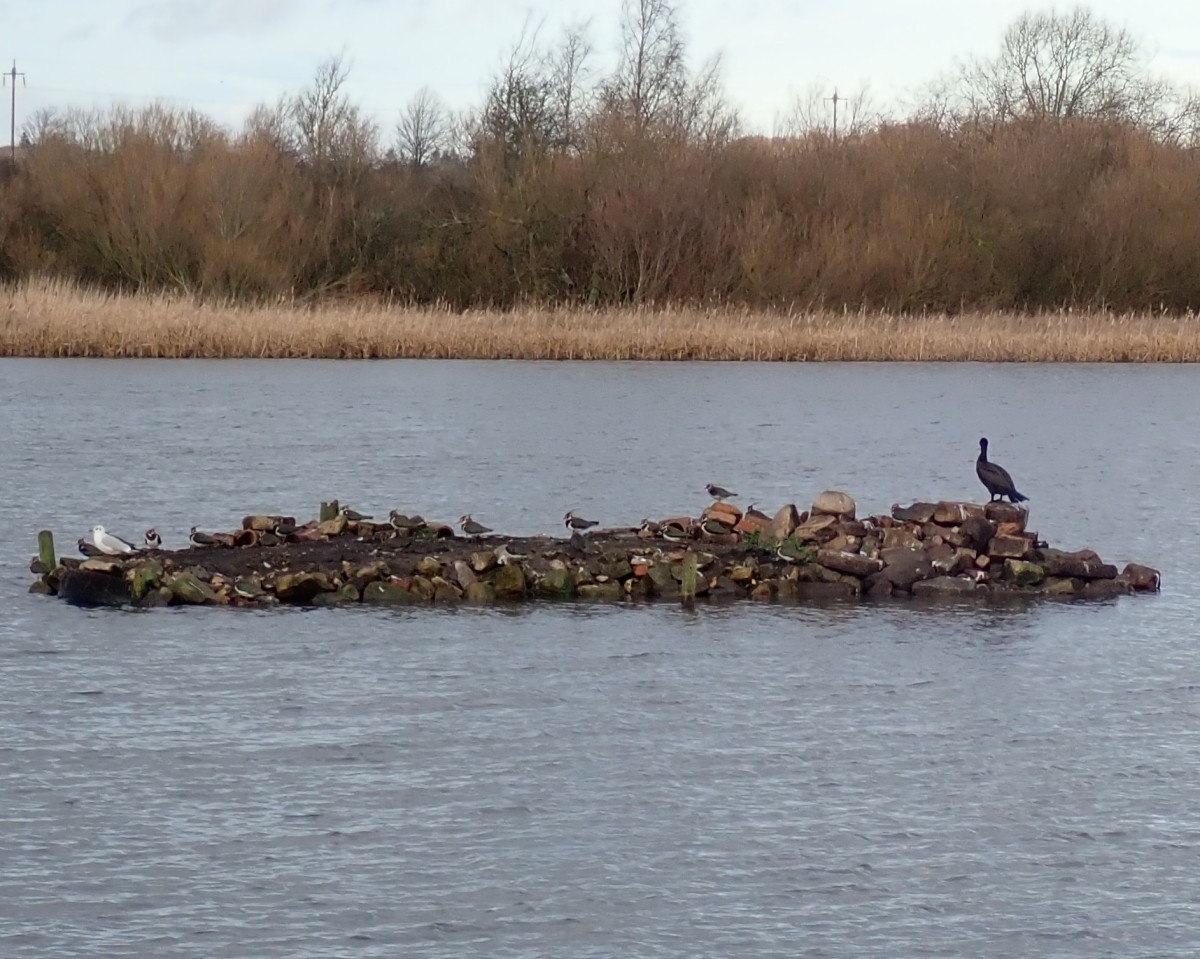

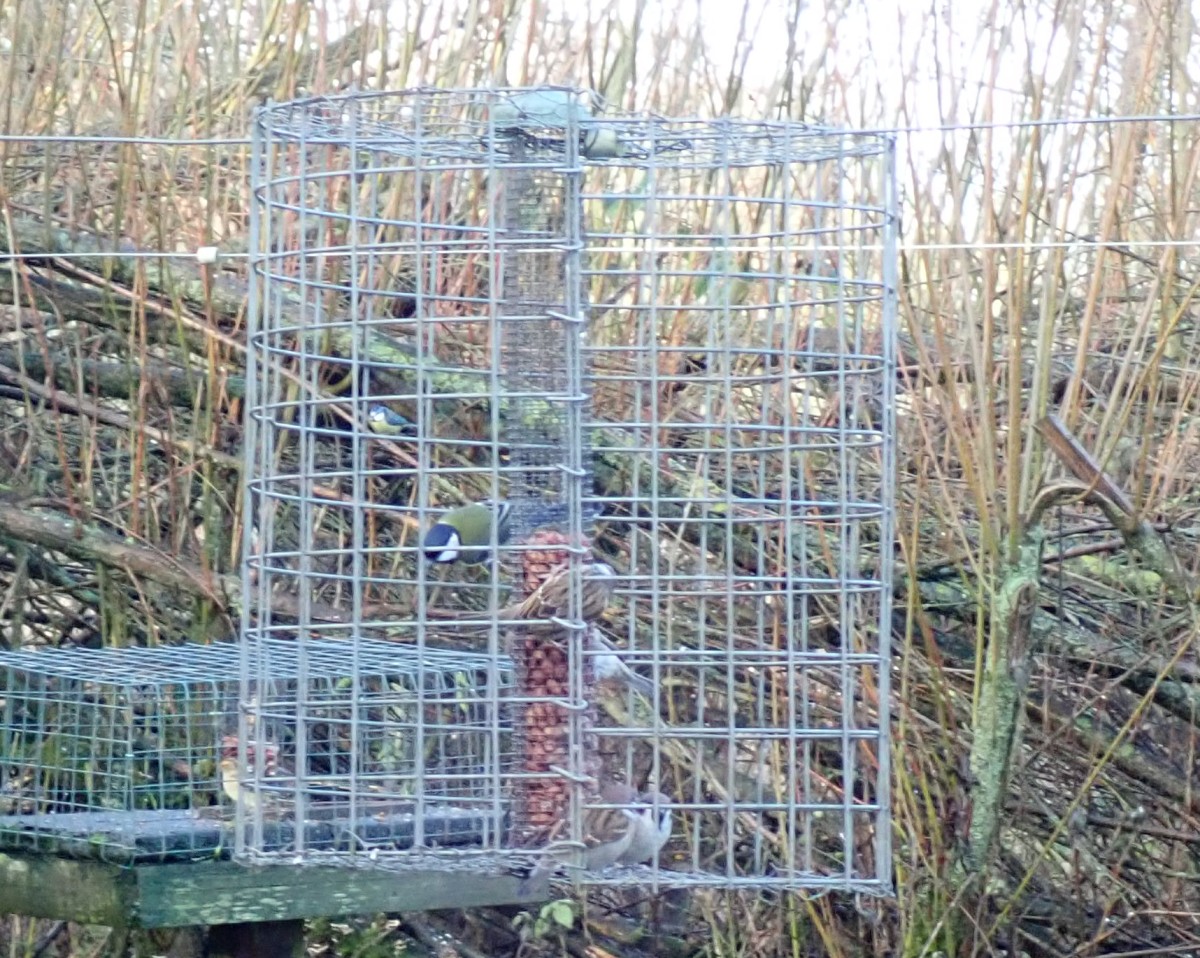
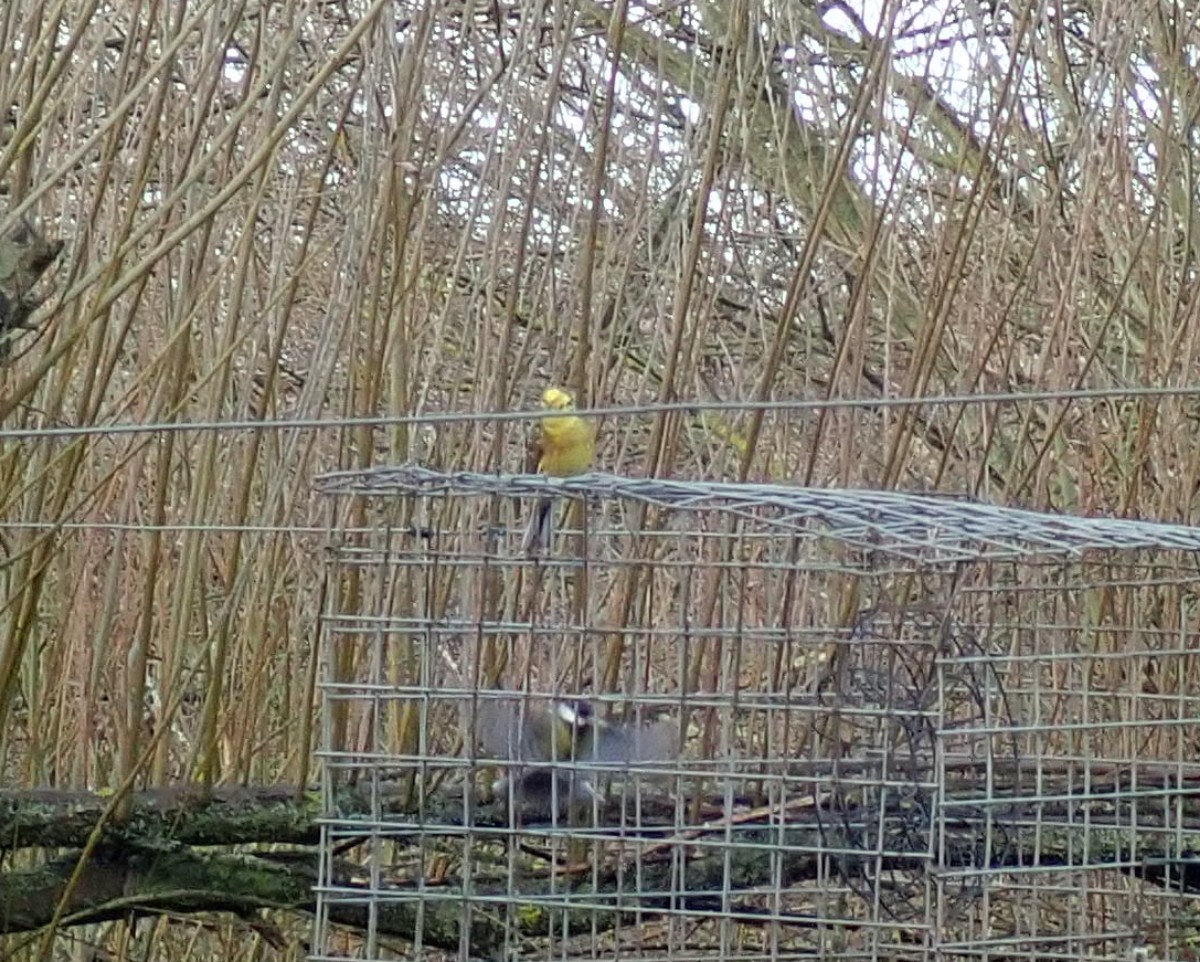
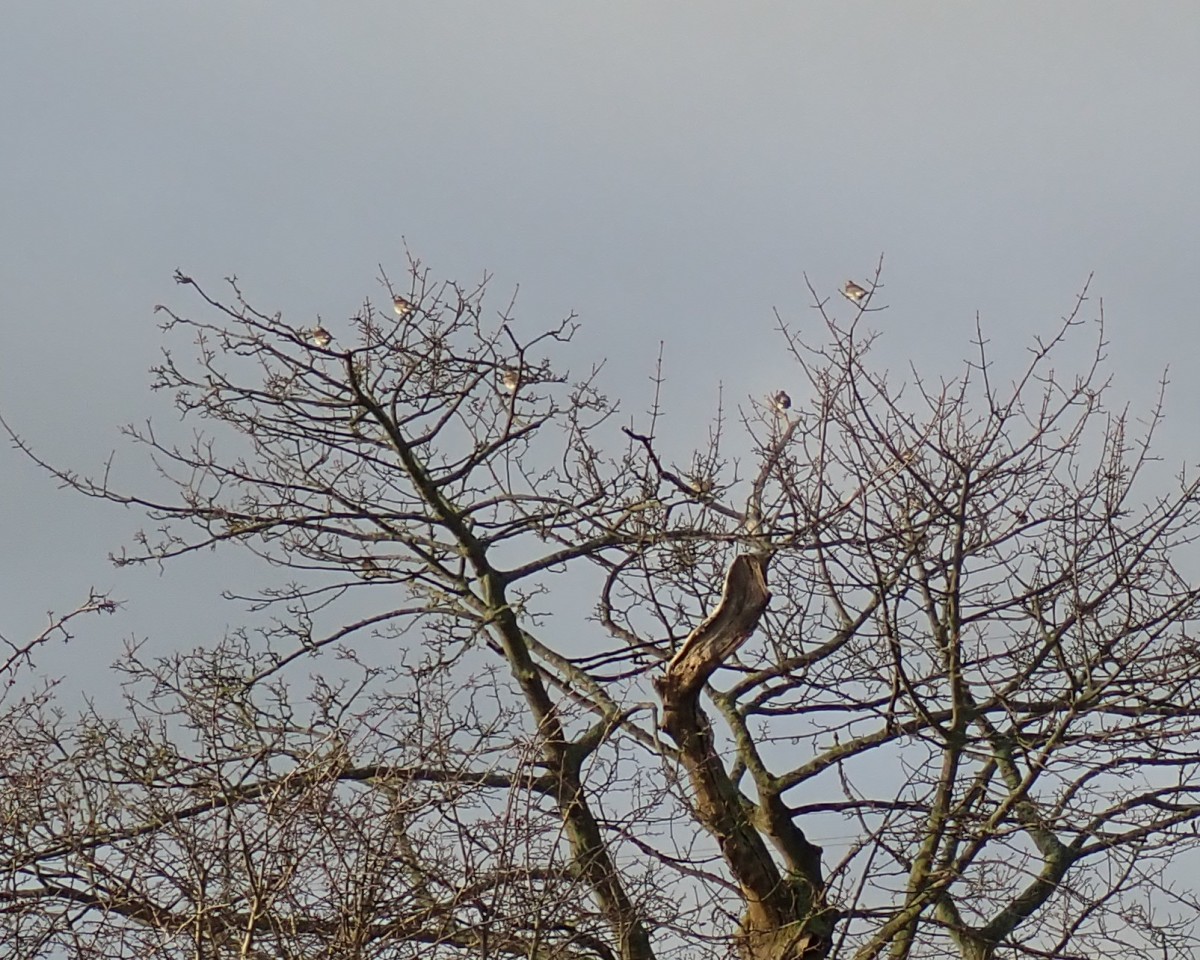
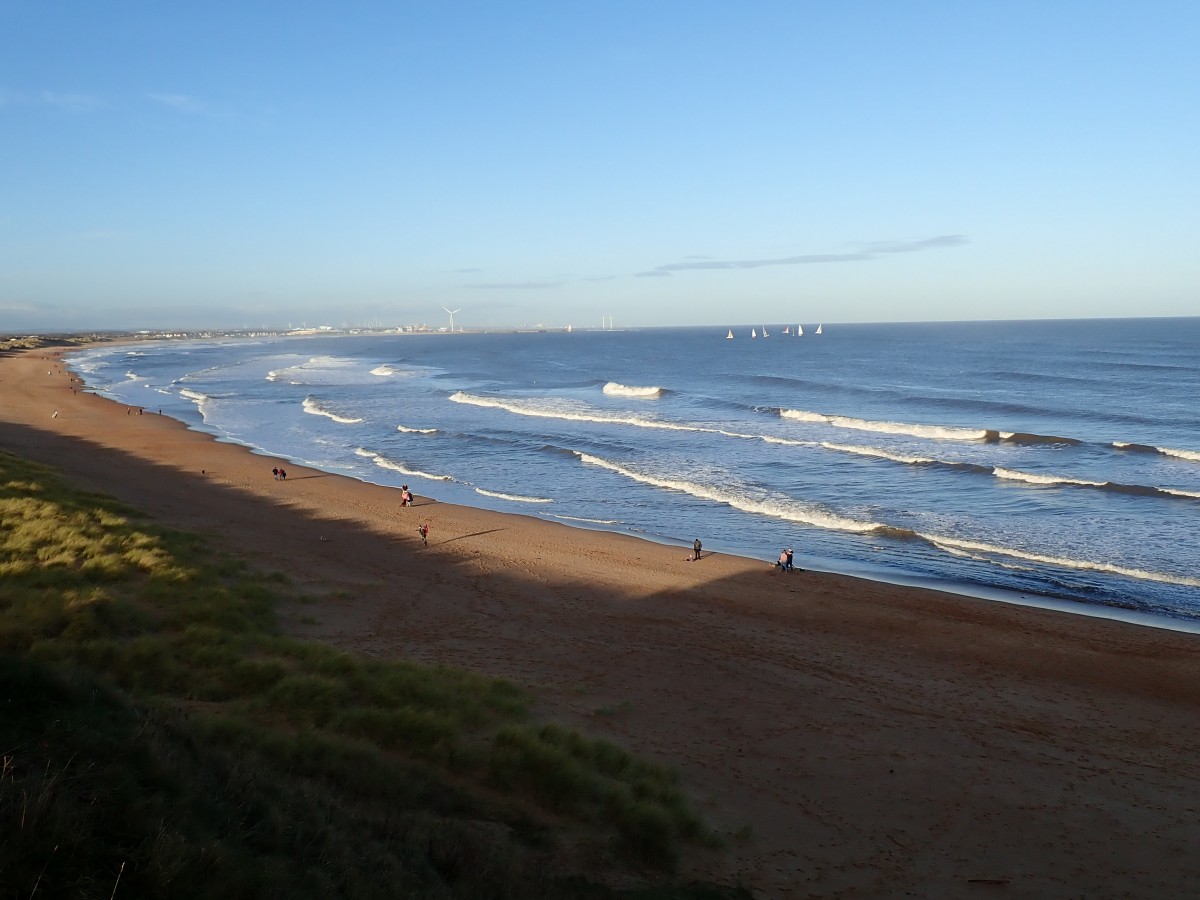

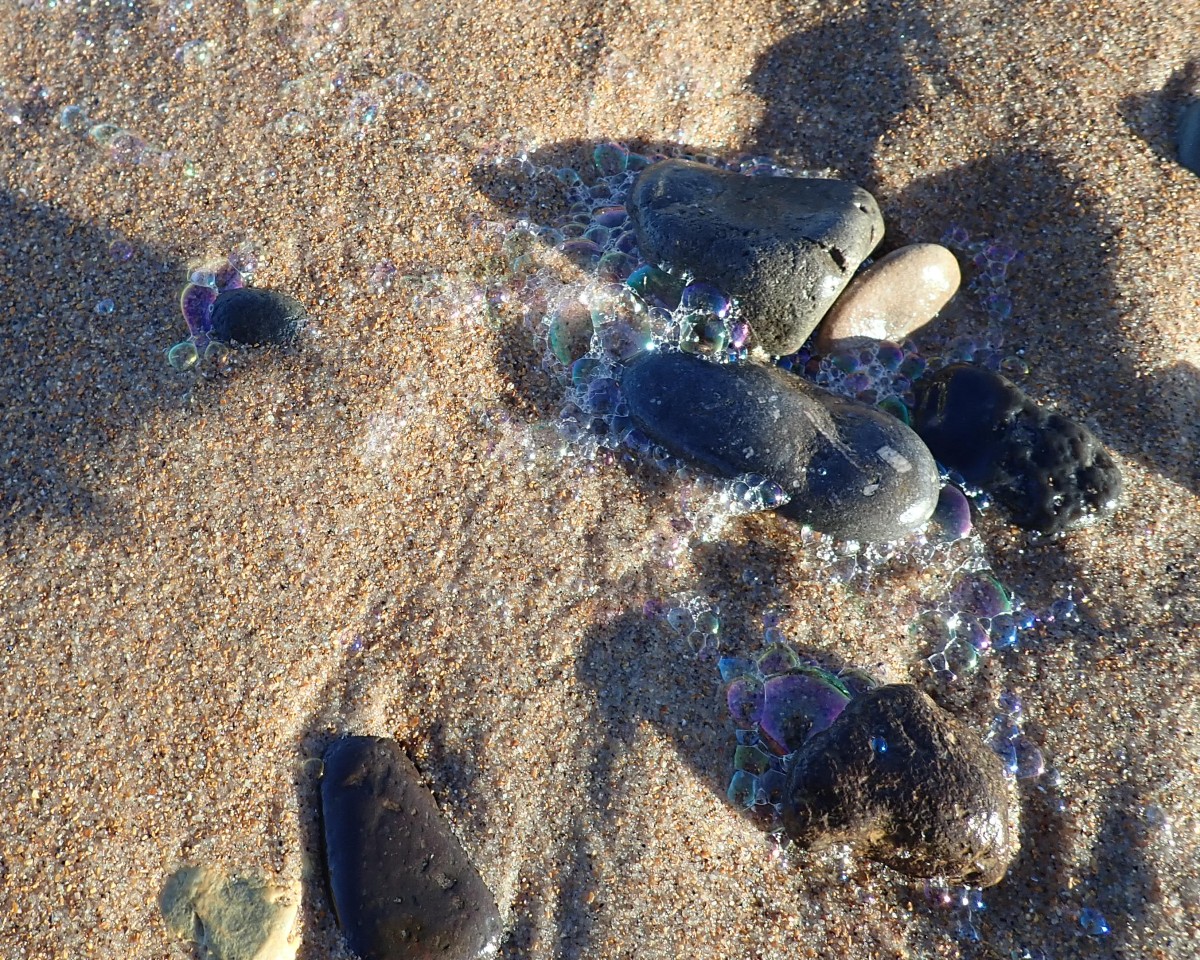
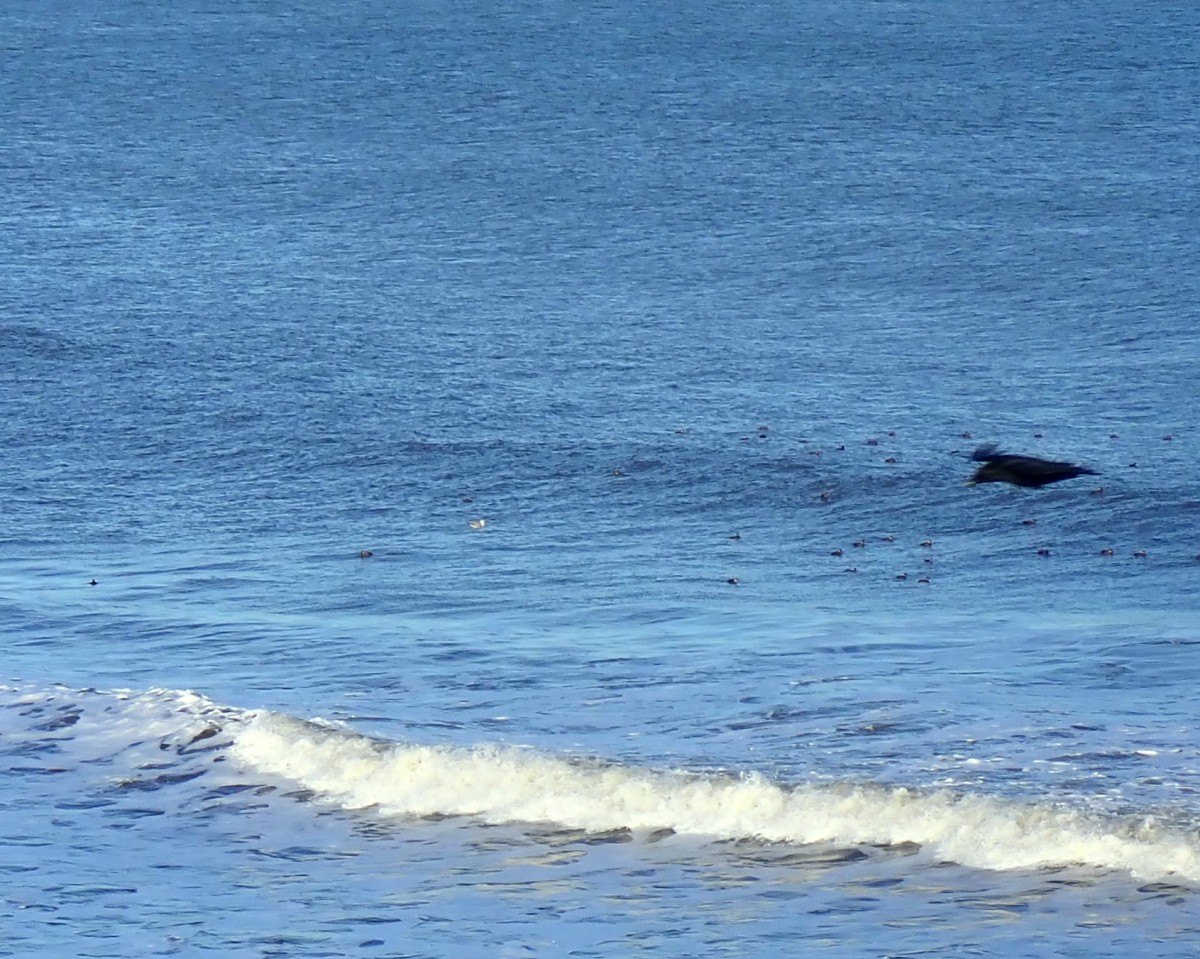

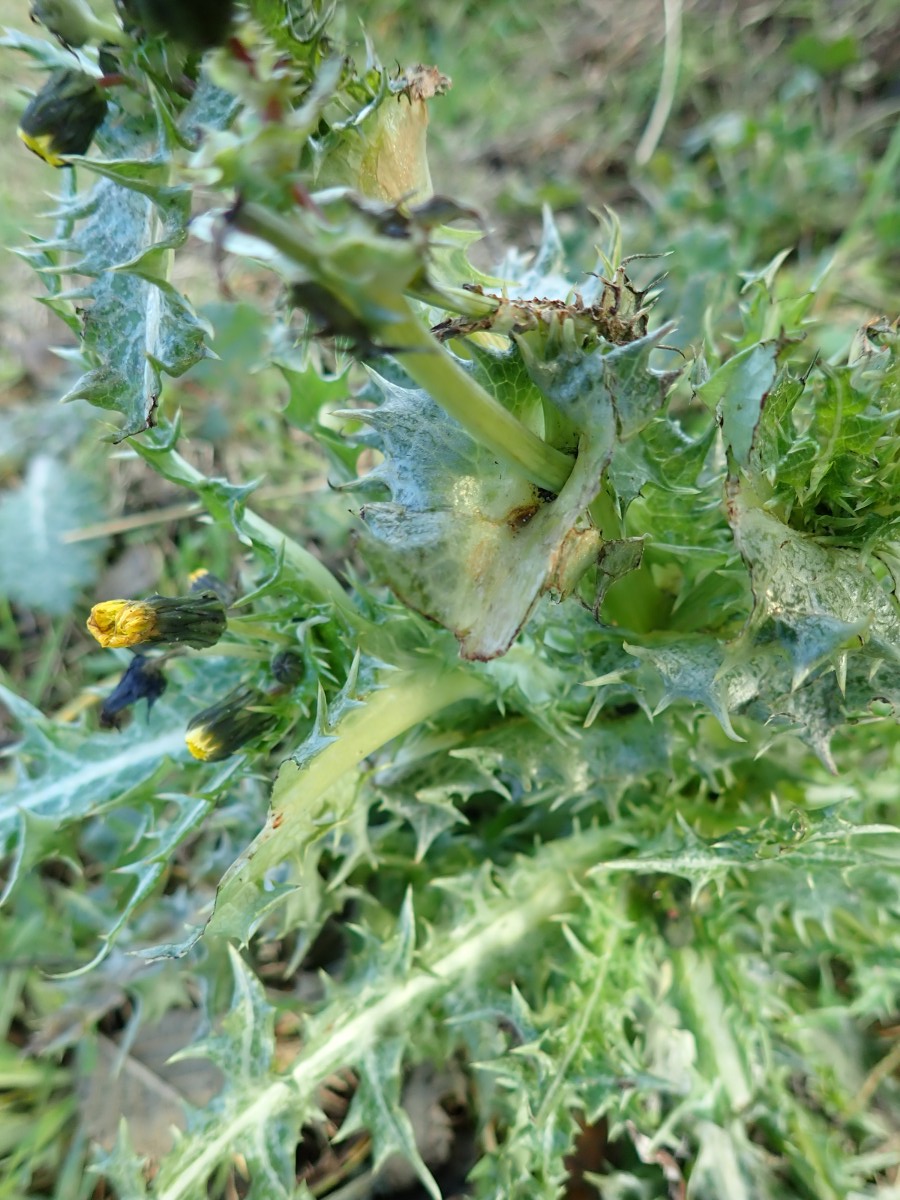
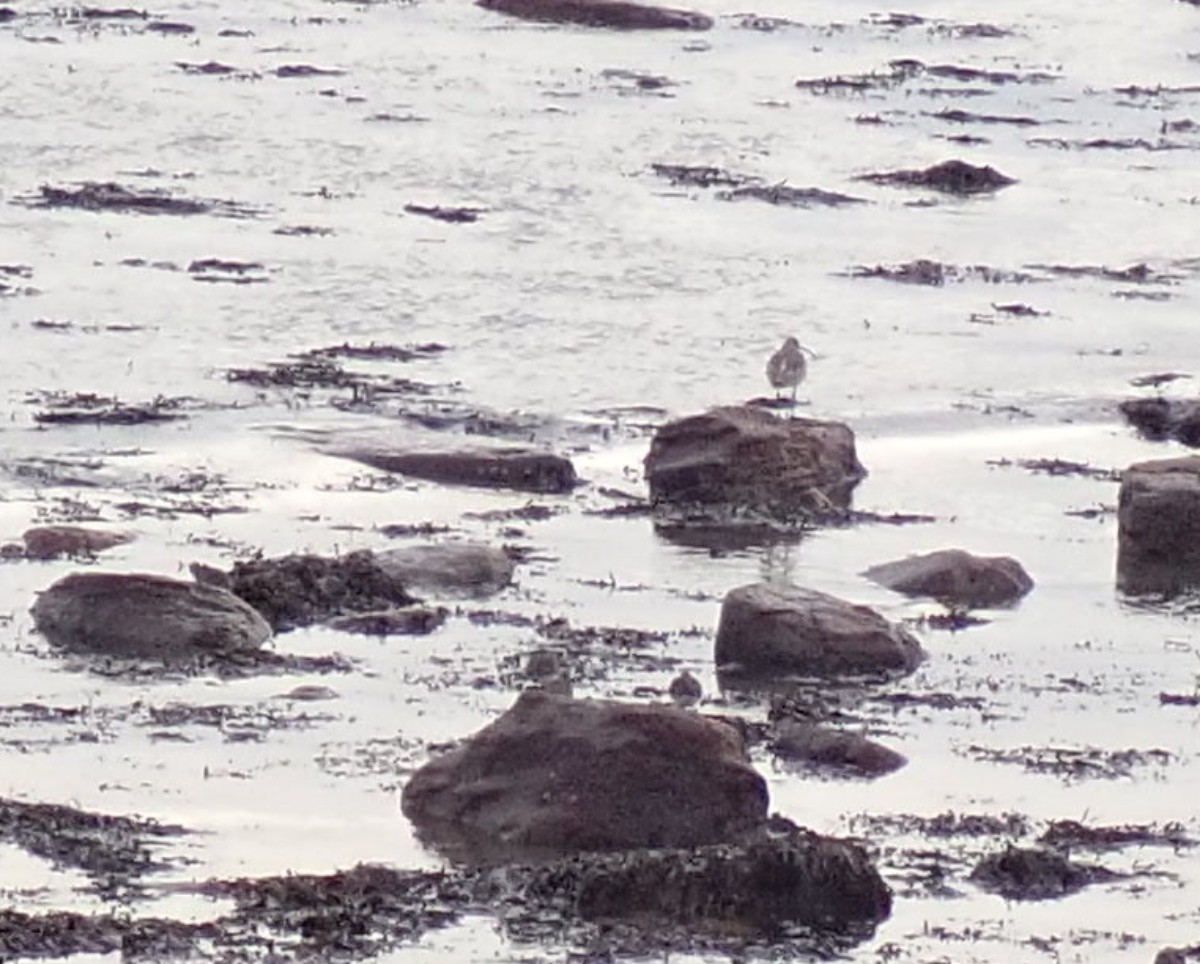

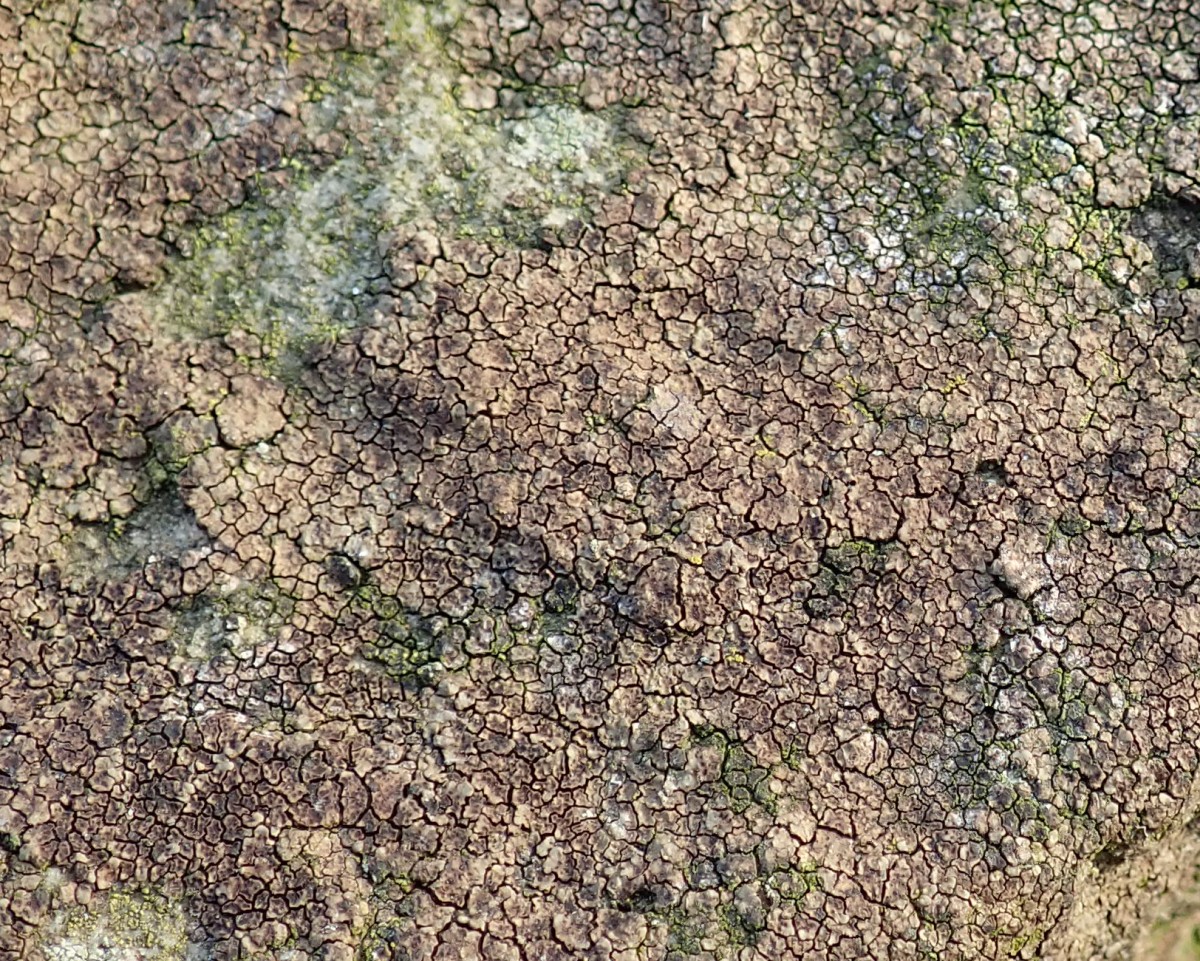
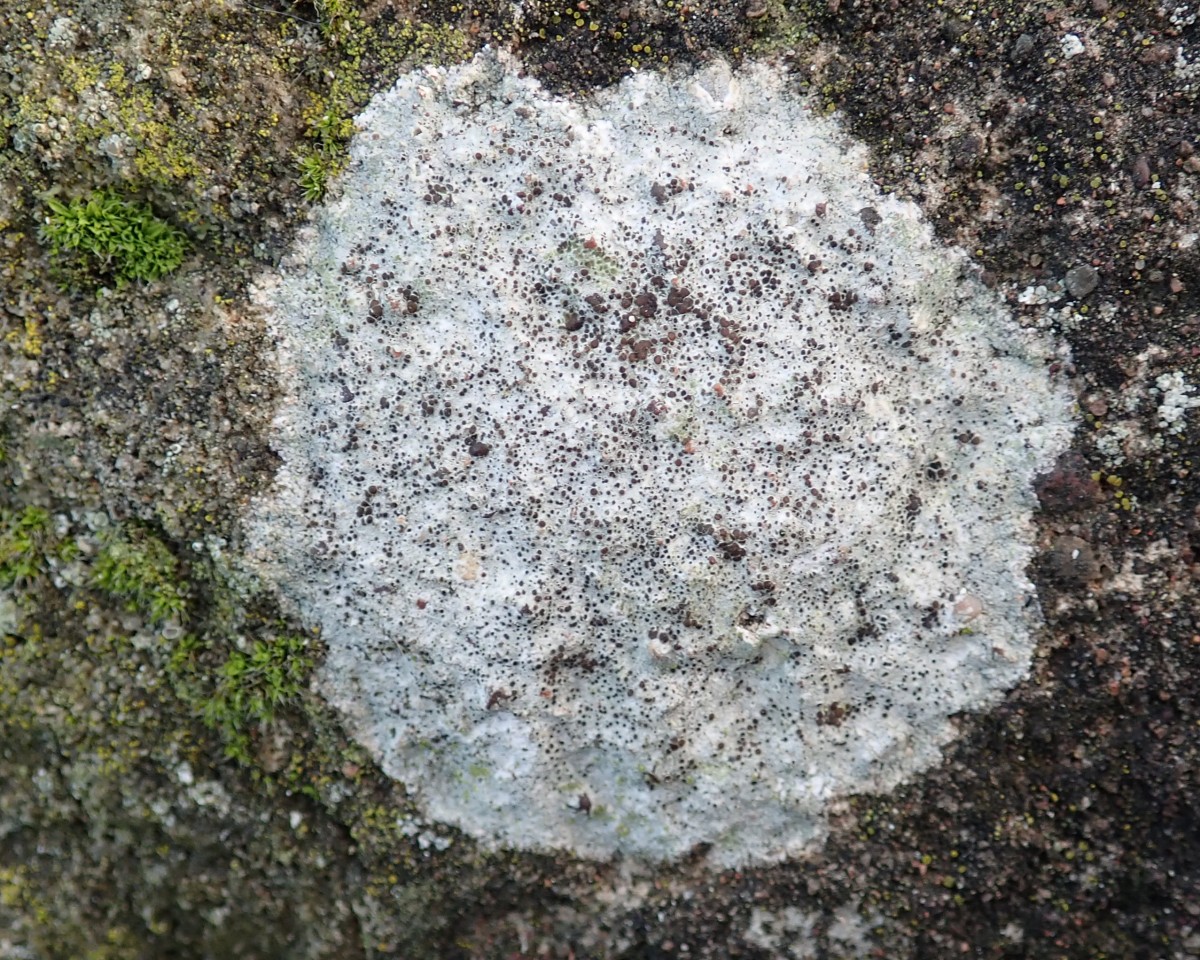
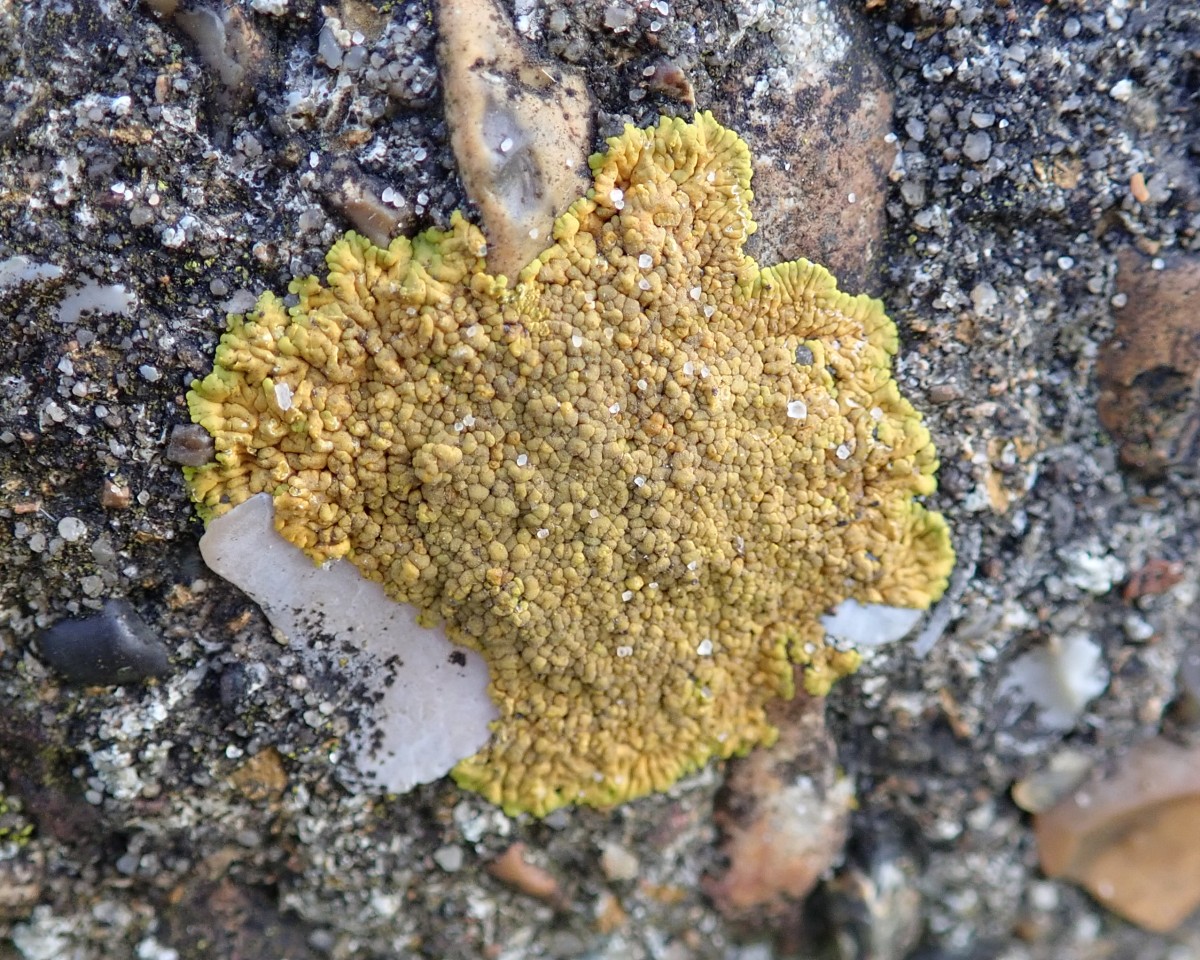
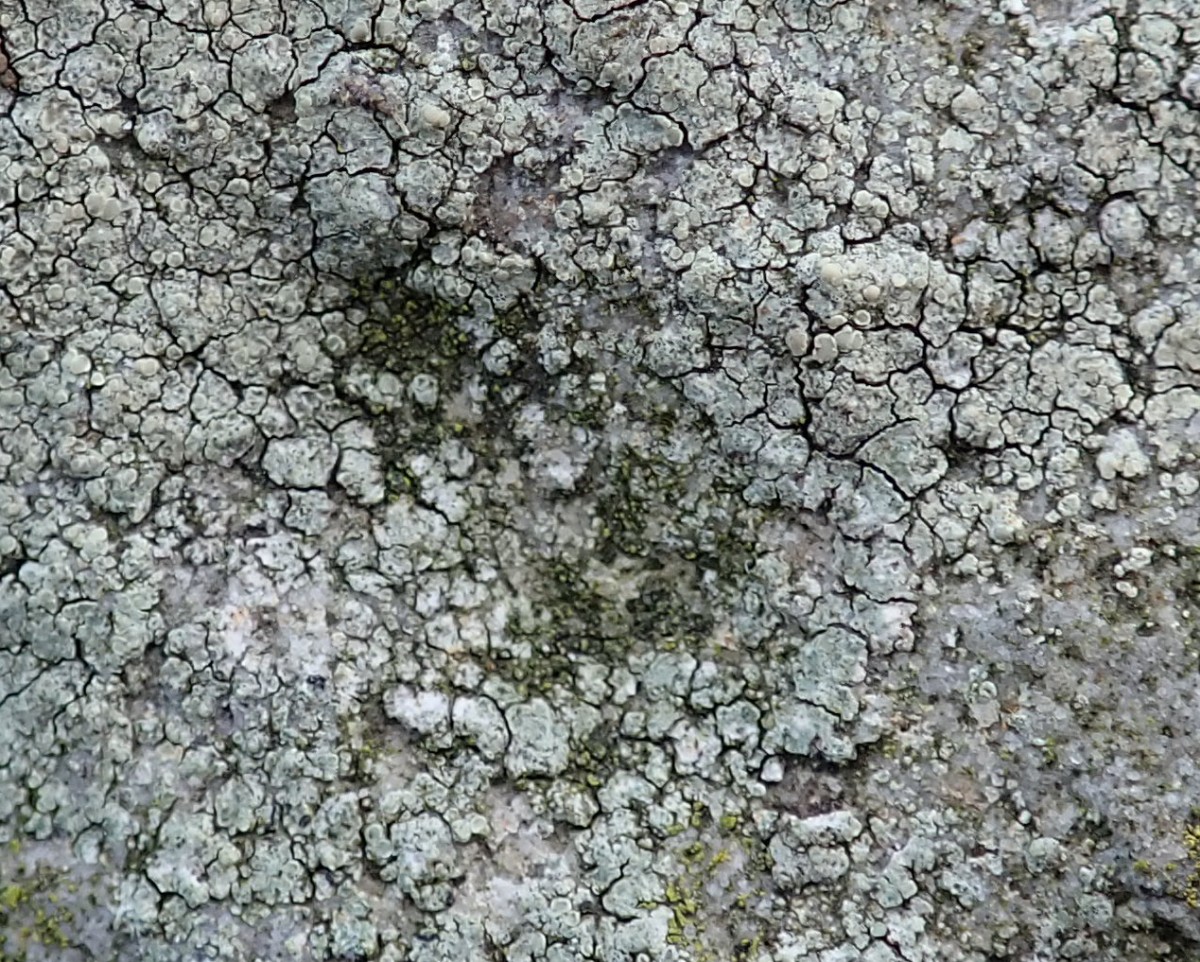
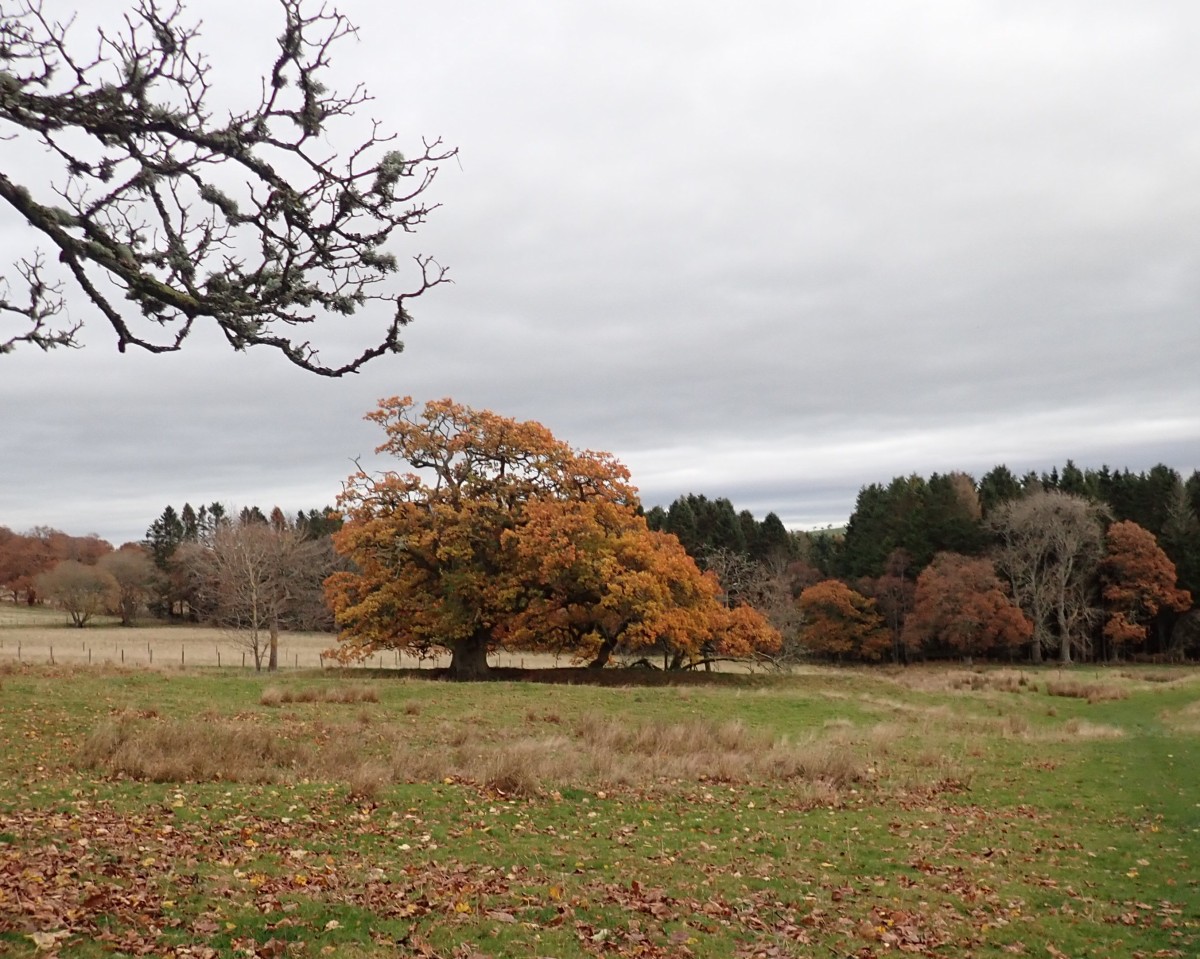
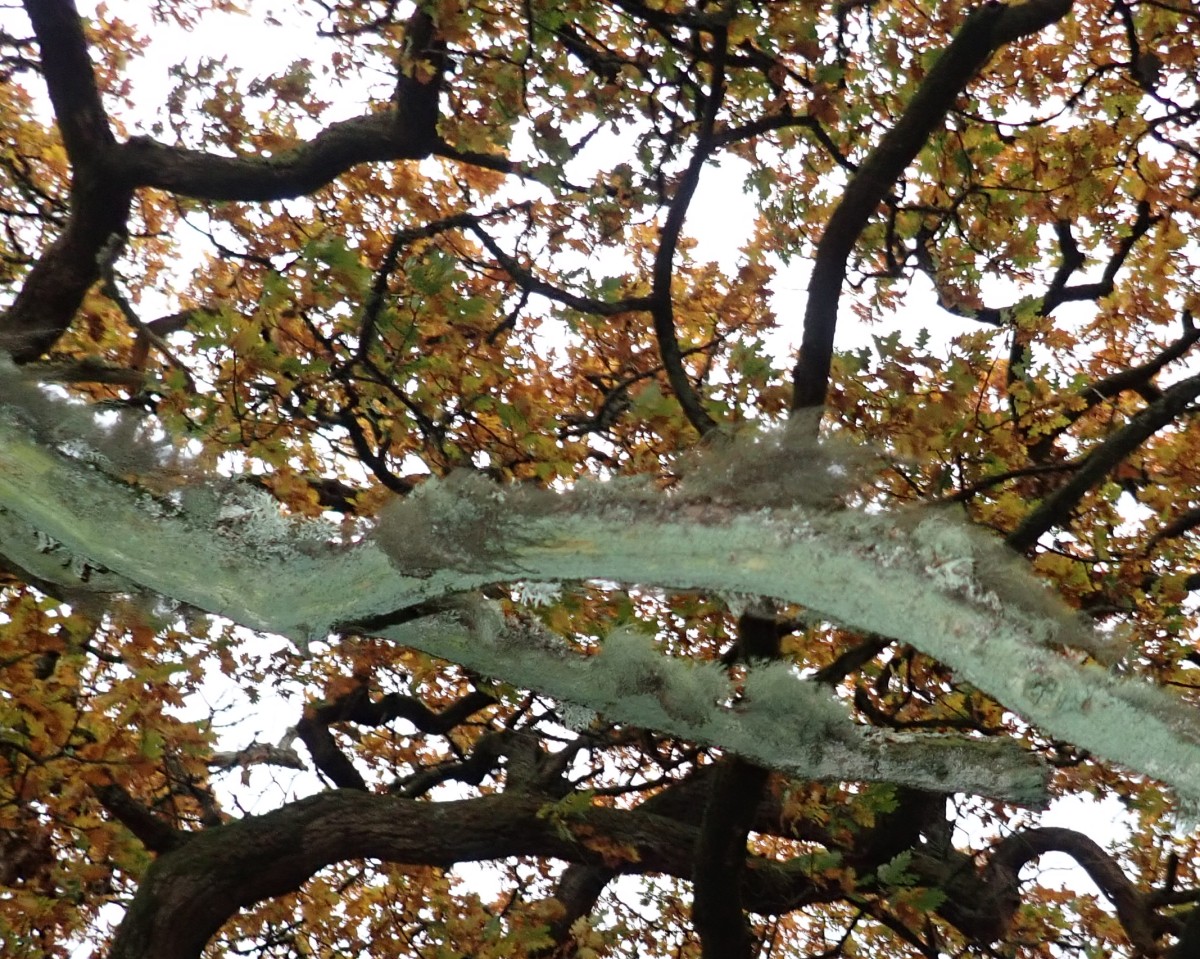



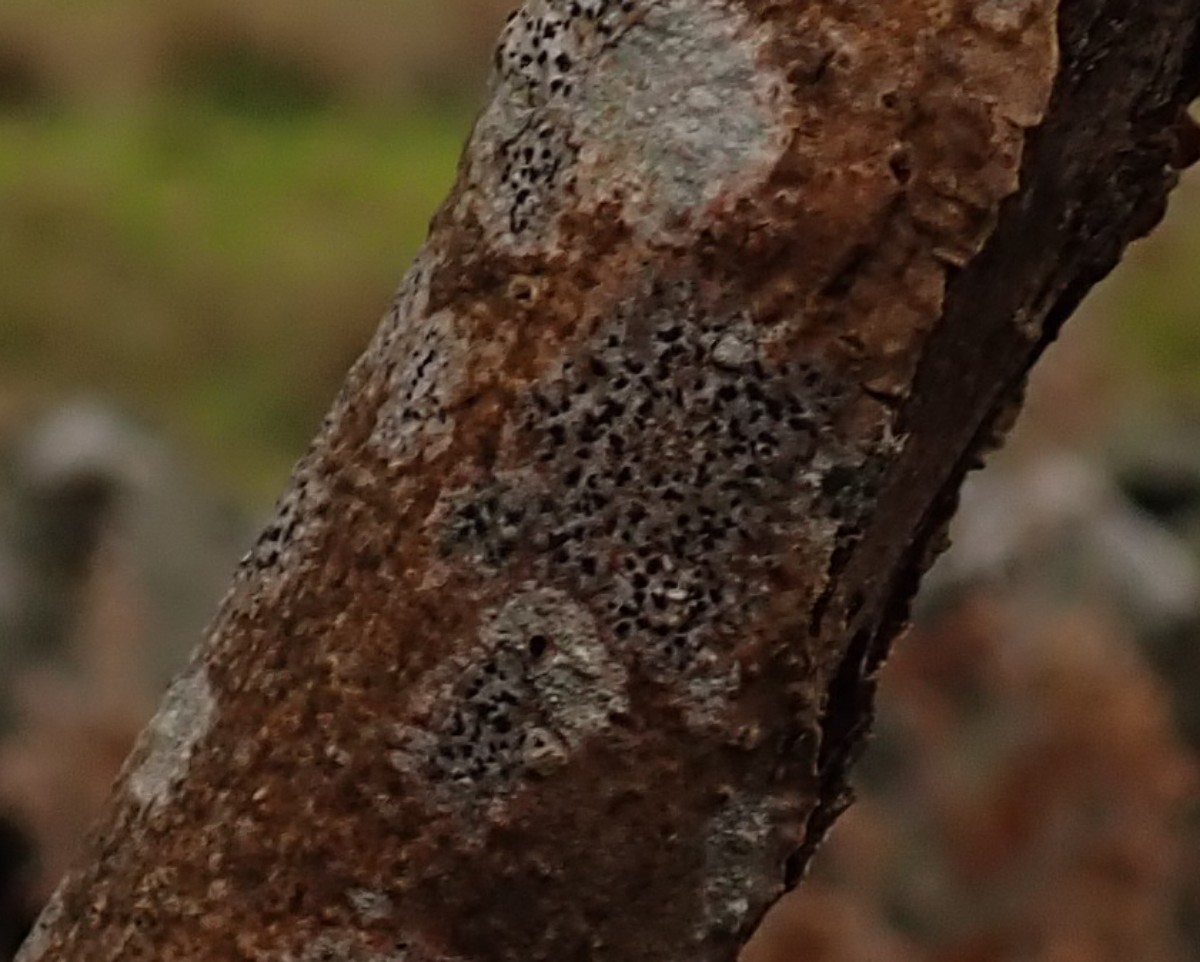
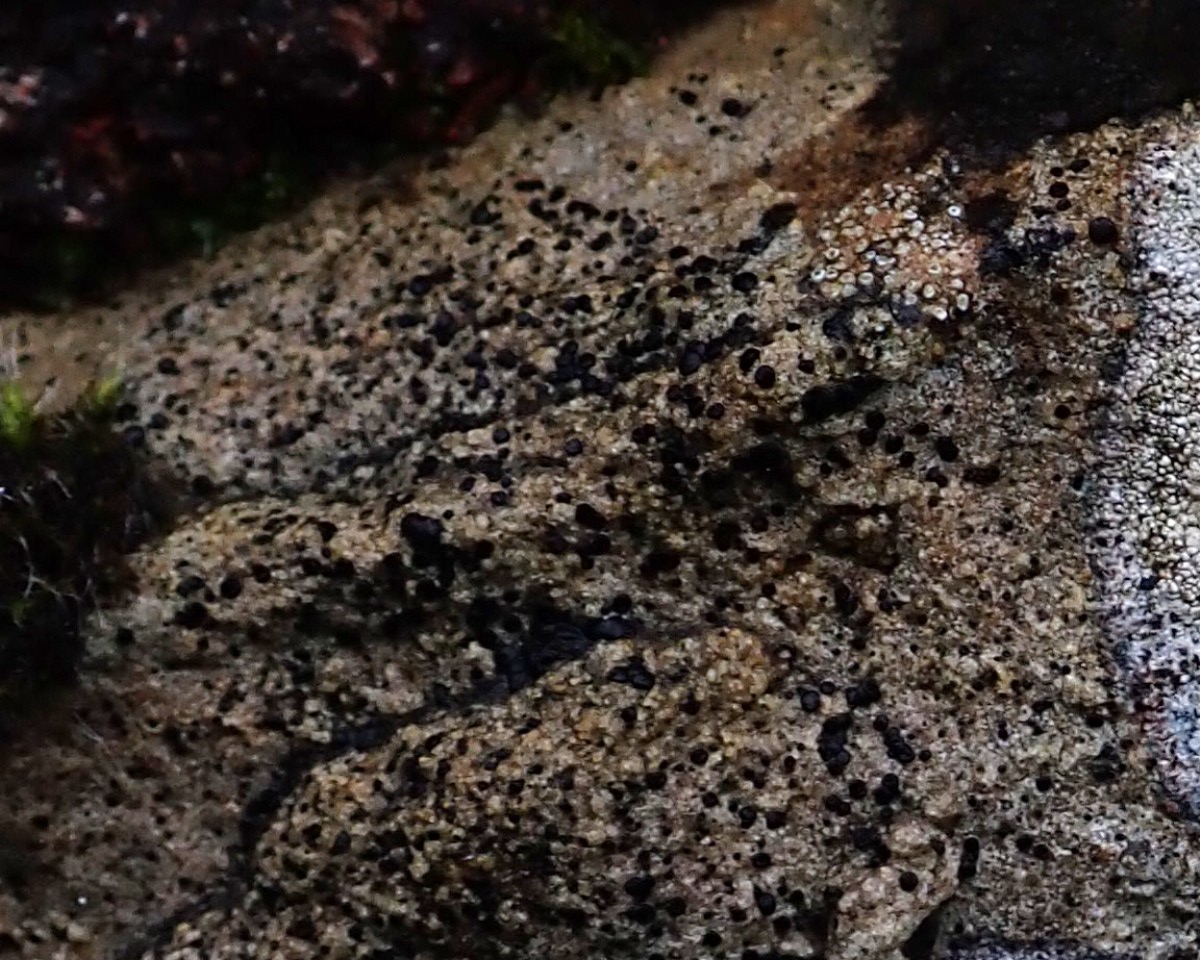 Mycoblastus sanguineus is a crustose lichen found on hard sandstone rocks. Could this be a specimen?
Mycoblastus sanguineus is a crustose lichen found on hard sandstone rocks. Could this be a specimen?